Moving seems like an easy task: pack up, drive away, and unpack when you arrive. However, the reality of relocating is much more complex, with ordinances and inconveniences popping up and complicating the process. Even an experienced rolling stone can benefit from some helpful moving in tips.
What to Know on Moving Day
Moving day is a high-stress, high-energy experience. Between juggling a moving crew, landlord, and a growing mountain of boxes, things are bound to fall through the cracks. These tips on moving will help make the day easier – from loading the first item on the truck to breaking down the last box.
Some moving in tips are standard, while some differ based on location. Below you’ll see helpful tips everyone can follow on moving day. Keep scrolling and you’ll find some city-specific moving tips and tricks.
Before the Move
The morning of a move can be stressful, but we’re here to help you make it through the day swimmingly. Before you say goodbye to your old home, follow these moving day tips:
- Leave a few cleaning supplies within reach. Some apartments require you clean up before moving out (plus you might want to clean up once you arrive at your new place).
- Do a final walk-through. It’s easy to forget cups in a cabinet, towels on a rack, or sneakers in the back of a closet. Make sure nothing is left behind before you head out.
- Pack a bag for moving day. Keep any documents you may need on hand. You might end up needing leases, rental agreements, receipts, or your contract with the moving company throughout the day.
- Don’t do any packing day-of. Packing boxes amidst the chaos of people shuffling in and out of the house will delay the move and increase the risk of forgetting items.
- Keep treasured belongings with you. Valuable items like cash, jewelry, and prescriptions should travel with you – not packed away where they could potentially be lost or damaged.
- Label every box. Marking boxes ‘kitchen’, ‘living room’, or ‘bedroom’ will help speed up the time the moving crew spends bringing your belongings inside.
During the Move
The crowd of people shuffling in and out of your house on moving day is taxing. Follow these moving in day tips to help keep your sanity:
- Guide your moving crew. Whether you hire a professional crew or convince a group of friends to help, it’s important to make sure your team knows exactly where they’re going. This is especially important on busy city streets, parking lots or loading docks, and in buildings with strict moving regulations.
- Organize your items the night before. This is simple but effective advice for moving. Before your moving crew arrives, make sure large furniture items are cleared off and ensure there are no boxes blocking walkways or entries. Having to navigate a maze of your stuff will only delay the process.
- If you can, lend a helping hand. Some buildings have moving schedules and require it be completed within certain hours. If you’re crunched for time and able to help, lend a hand by bringing in some small boxes. But leave the heavy lifting for the professionals.
- Show your appreciation. Gratuity is not always expected by a moving crew but is certainly appreciated for a job well done. Whether it’s in the form of lunch, coffee, or cash, be prepared to tip your movers.
After the Move
Some of the best tips for moving day have to do with staying organized after all your things are moved. You already made it through a hectic day, so keep your cool after it’s all done:
- Schedule services in advance. It’s best to have utilities start on the day you move so you don’t have to spend your first night without gas, water, or electric. Services like cable and internet also come in handy when installed immediately.
- Be mindful of your neighbors. This particular tip on moving affects everyone – if you’re moving early in the morning or late in the evening, be respectful of your noise levels. Also, try not to inconvenience them with your moving equipment. You don’t want to start things off on the wrong foot with new neighbors.
- Communicate with property management. Some buildings and neighborhoods regulate how certain items are disposed of, and where they should be placed. Ask the property management team before tossing things and learn their rules on recycling and disposing of toxic waste.
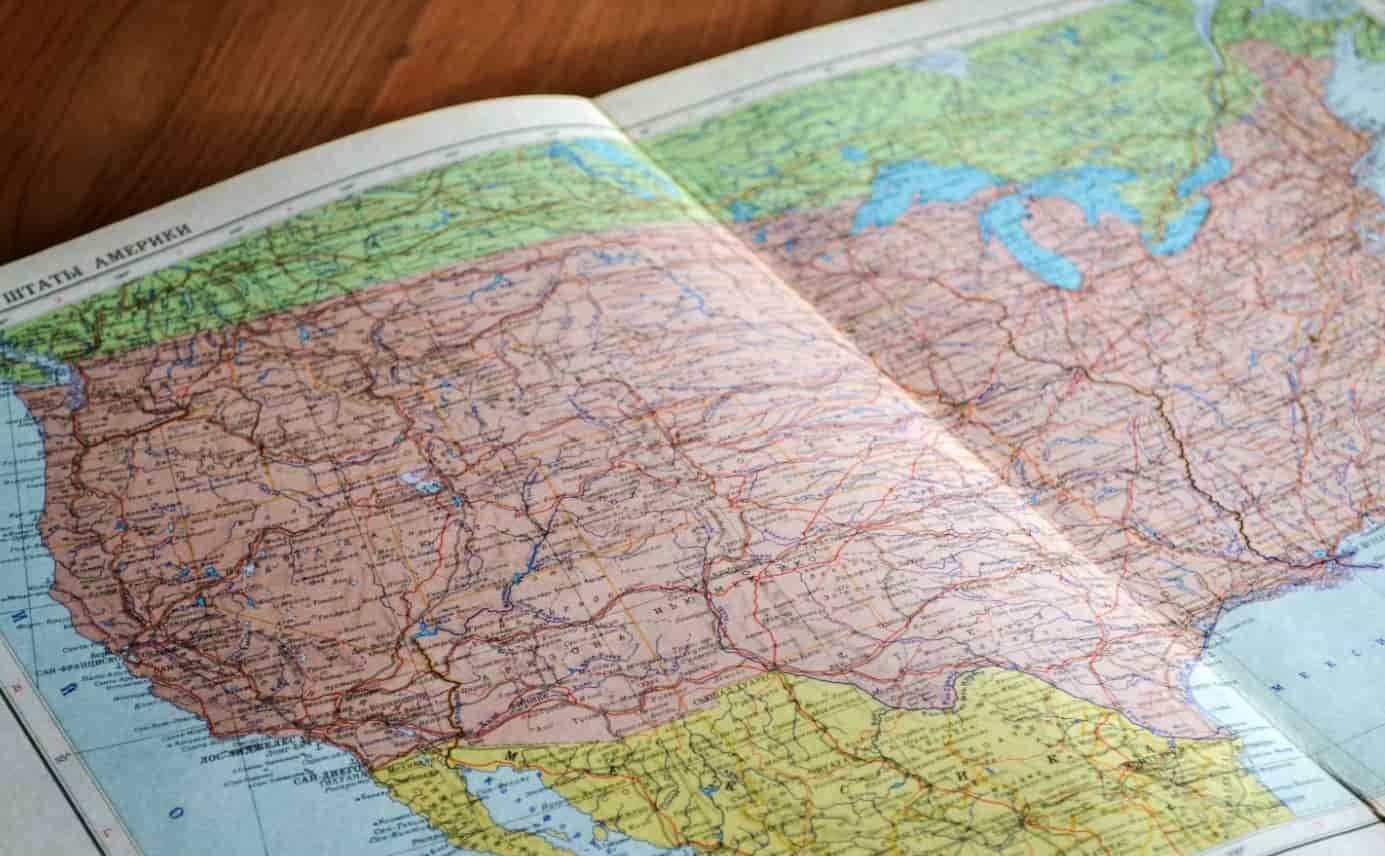
Moving Tips Based on Location
Some tips are standard no matter where you’re moving but others are valuable, city-specific guidelines that will help you navigate your new home. For example, helpful moving tips in Dallas won’t be so helpful for your move to New York City, and those going coast-to-coast will need tips for moving cross country.
At Move Matcher, we want to help limit the amount of relocation speed bumps you encounter with these specific moving tips and hacks, based on location.
Atlanta
Do you want to live in one of the most diverse cities in the south? Does enjoying incredible eats, sunny weather, and fantastic public schools sound tempting to you? Look no further than the capital of the Peach State, Atlanta. Young millenials are flocking to this area and it continues to expand every single year.
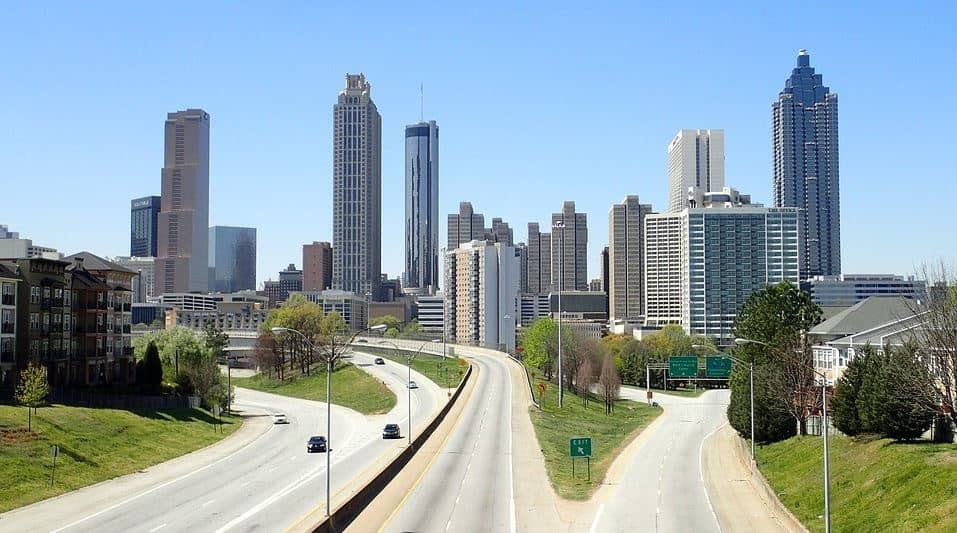
Atlanta Weather
What’s the weather like in Atlanta? Pretty fantastic. The city benefits from lots of sunny days every year, and average temperatures in the 60s, all year round. The city gets less than 6 inches of rain per month and rarely sees snow.
However, like other cities in the South, the warm climate can result in extremely hot, humid days where the temperature reaches highs in the 80s or even 90s. City skyscrapers trap an intensify the heat, making the downtown area even hotter than the surrounding suburbs. If you’re moving into Atlanta at the height of summer, make sure you are well hydrated, take frequent breaks, and use sunblock to protect your skin.
City Restrictions in Atlanta
You may have heard about the traffic in Atlanta. Many natives will tell you “it’s always rush hour in Atlanta.” Like many other cities, driving through downtown can be difficult, especially if you’re new to the area, and street parking may be limited. Make sure to find available parking near your new home, if you don’t have a driveway, or talk to your landlord about where your moving truck should park.
- Peachtree is part of A LOT of street names. Make sure you look closely at street signs before you turn down the wrong road!
- Right Lanes in Atlanta often turn into “exit only” lanes without much notice. Avoid switching lanes or taking a wrong turn, because, in this city, one wrong turn can keep you on the road an extra 30 minutes.
- Rain adds time. Atlantans aren’t used to driving through weather, and many will take it slow during any rainstorm, so check the weather before your moving day.
- Flights: Atlanta is home to the busiest airport in the world. If you are flying into the city, make sure to account for increased traffic around the airport.
Apartment Requirements in Atlanta
Whether you’re moving into a privately-owned building or luxury high-rise, most apartment buildings have certain moving day rules for their residents. Every apartment is different, but you should ask your landlord or property manager about these things:
- Elevators: Buildings with elevators often block out certain times they are in use for moving purposes. Meaning you’ll need to contact your building and reserve a time in advance. If your building does not have an elevator, take note of the available space so you can assess what furniture will make it up to your unit.
- Loading Dock: Larger buildings usually have a street-level back entrance with a wide, accessible doorway and sometimes a service elevator. If your building does have a loading dock, chances are residents are required to move in there.
- Designated Doors: Instead of a loading dock, some buildings prefer to have residents use a more discrete entrance to avoid heavy traffic in the front door and lobby.
Neighborhood Limitations in Atlanta
Even if you’re not in the hustle and bustle of downtown Atlanta, you still may run into issues with a single-family home. Check ahead of time to see if your neighborhood has any of these limitations:
- HOA Rules: Some homeowner associations (HOA) have rules regarding what can and can’t happen in the neighborhood like tampering with landscaping, blocking certain areas, and other inconveniences that could happen while moving.
- Noise: Whether or not it’s officially enforced through an HOA, it’s always good to be mindful of your noise level if you will be moving in early in the morning or late in the evening.
- Blocking Driveways: This is something city, and suburban dwellers always agree on: never block a driveway.
Busy Moving Times in Atlanta
- The Peach Drop: More than 100,000 people visit Atlanta every New Year’s Eve to celebrate the coming of the new year. Like the Ball Drop in New York, the Peach Drop does feature a large peach, which descends as everyone counts down to midnight. Sectioned off streets and the large influx of tourists may increase traffic and impair your moving route.
- Atlanta Dogwood Festival: Usually taking place in Mid-April at Piedmont Park, the Dogwood Festival is how native Atlantans welcome spring into the city. The festival features everything from local artisans to carnival rides, disc dog competitions, and live performances. Areas near the park may be closed off or have significant traffic.
- Peachtree Road Race: A yearly 10K race, the Peachtree Road Race occurs every 4th of July in Atlanta. It’s known as the largest 10K in the world and can have upwards of 60,000 participants. The race starts at Lenox Square Mall and finishes at Piedmont Park, so expect detours and road congestion in that area.
- Dragon Con: This annual convention takes over the streets of Atlanta near the end of August and the start of September (usually around Labor Day Weekend). It’s one of the largest multi-genre conventions in the world and includes events at multiple hotels, live performances and even a parade. Check parade routes and aim to avoid the convention area if you’re moving to Atlanta during Dragon Con.
- Other Yearly Festivals: Atlanta is a city that loves to party, so many additional festivals are going on year round, from music and cultural fests to neighborhood block parties. Check net to see a full list of local events during your moving day.
Austin
Austin is the capital of Texas, the Live Music Capital of the World, a hub for technology and manufacturing, and one of the most popular moving destinations in America. With trendy neighborhoods attracting millennials, especially South Congress, noteworthy schools bringing in families, and plenty to eat, see and do, there’s something for everyone in Austin, TX.
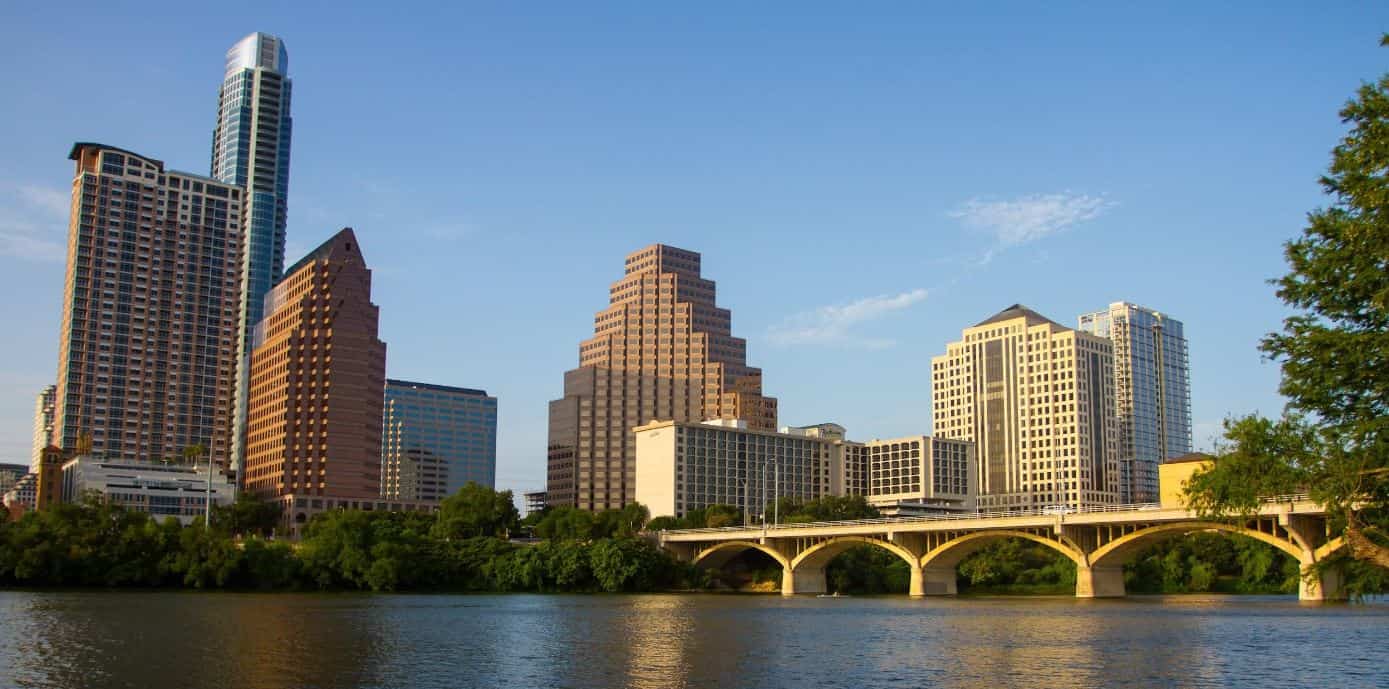
Austin Weather
People living in Austin get to enjoy warm weather all year round. Even in cooler months, the average temperature only dips to 59 degrees, and during the Summer, it can get as high as the 90s. Because of the intense heat in Austin, it’s important to take precautions when moving. Always make sure to stay hydrated and take frequent breaks to get out of the heat. You’ll also want to ensure any exposed skin is protected from harmful UV rays with a high-SPF sunblock.
City Restrictions in Austin
Unlike many American cities, Austin is easy to navigate, even if it’s your first time here. That being said, there are still some things to watch out for when you’re driving in Austin. The Texas capital is known for having almost constant construction, which means one or more roads on your route might be closed, or have merged to one lane, so be sure to take your time and be courteous to other vehicles on the road. Here are a few more tips for driving and parking in Austin.
- Right on Red: Turning right at a red light is permitted in Austin, as long as you come to a complete stop before making your turn. Be aware this city does have red light cameras to catch traffic violations!
- Rush Hour: If you’re moving in during the morning or evening rush, add an extra 15 or so minutes to your travel plans, since you’ll probably hit traffic, especially downtown.
- Parking: On-street parking in Austin is generally free between midnight and 8 AM and on Sundays but be sure to check road signs to avoid a hefty ticket. Don’t want to carry cash? Austin offers an app called Park ATX, which you can use to pay for metered spots.
Apartment Requirements in Austin
Whether you’re moving into a privately-owned building or luxury high-rise, most apartment buildings have certain moving day rules for their residents. Every apartment is different, but you should ask your landlord or property manager about these things:
- Elevators: Buildings with elevators often block out certain times they can be used for moving purposes. This means you’ll need to contact your building and reserve a time in advance. If your building does not have an elevator, take note of the available space so you can assess what furniture will make it up to your unit.
- Loading Dock: Larger buildings usually have a street-level back entrance with a wide, accessible doorway and sometimes a service elevator. If your building does have a loading dock, chances are residents are required to move in there.
- Designated Doors: Instead of a loading dock, some buildings prefer to have residents use a more discrete entrance to avoid heavy traffic in the front door and lobby.
Neighborhood Limitations in Austin
Even if you’re not in the hustle and bustle of downtown Austin, you still may run into issues with a single-family home. Check ahead of time to see if your neighborhood has any of these limitations:
- Yard Parking: Many neighborhoods and HOA’s in Austin have rules that prohibit parking your car on your front lawn. In these neighborhoods, cars can only be parked on paved driveways and along the street.
- Noise: Whether or not your HOA enforces noise limits, it’s always good to be mindful of your noise level if you will be moving in early in the morning or late in the evening.
- Blocking Driveways: This is something city, and suburban dwellers always agree on: never block a driveway.
Busy Moving Times in Austin
- Batfest: Each August, the Congress Avenue Bridge shuts down, as over 1.5 million bats emerge from under the bridge for their nightly flight. One of the unique events in Austin, Batfest includes food vendors, musical performances, and even a bat costume contest. Will you be moving to Austin during Batfest? Make sure your route considers the closed bridge and congested roadways.
- South by Southwest: A multi-industry conference takes place each March, the South by Southwest brings hundreds of thousands of visitors to Austin. In addition to the conference itself, there are awards, a festival, exhibitions, and live performances.
- Trail of Lights: This Christmastime event has been an Austin institution for more than 50 years. More than 400,000 people come to the city each year to see an incredible display of over 2 million lights, along with live performances and a Fun Run. If you’re moving in during the event, be aware of increased traffic, and take some time to see the lights for yourself!
- More Events and Festivals in Austin: In Austin, there’s always something going on, from local street fairs to headlining musical acts that bring thousands of fans to the Texas capital. Be sure to check events on Visit Austin before your moving day.
After you move into your new home, explore your city with these tips!
Boston
Boston is a historical hub, a growing tech paradise and one of the most popular millennial destinations in America. If you’re planning a move to Boston, prepare to become part of a vibrant community and thriving city that you’ll quickly fall head-over-heels in love with. And if you haven’t been to the area before, keep these moving tips in mind to make your first day as a Boston local as easy as possible.
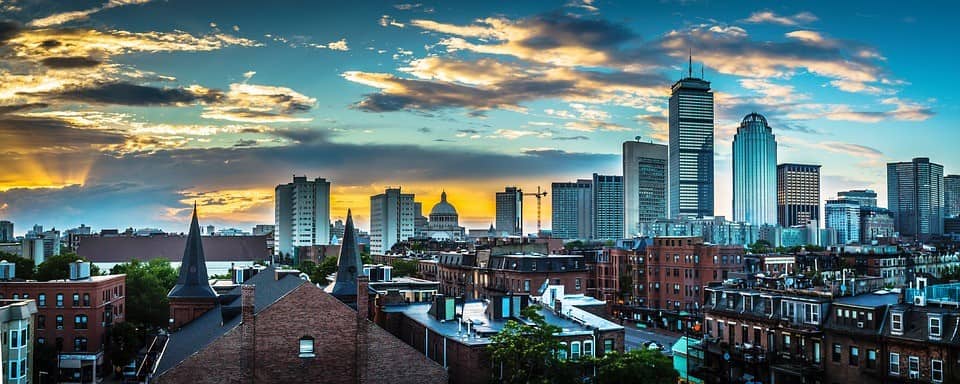
Boston Weather
Boston enjoys all four seasons and the extreme weather fluctuations that come with a seasonal climate. Summers in Boston are sweltering, so if you are moving to the area during July or August, take precautions to protect your skin, and stay hydrated. Winters in Boston are frigid, and frequent snowstorms can bring more than a foot of snow to the city, and create hazardous driving conditions. Be sure to check the weather forecast before your move-in date, and create a backup plan just in case.
City Restrictions in Boston
Like any city, Boston has a lot of traffic, but the city is also infamous for its confusing roadways. Forked roads, turn only lanes and multi-way traffic stops are a frequent sight in Boston and can make it difficult to find your way, especially if you’ve never lived here before. Keep your GPS on at all times, and read road signs carefully to make sure you stay on the right path! Here are a few other things to keep in mind about driving and parking in Boston:
- Boston Roads: Are windy and narrow, and filled not only with cars but also bikes and sometimes pedestrians. Drive with extra care.
- Roundabouts: Boston has several of them. If you haven’t driven around a roundabout before, here’s what you need to know: The cars IN the circle always have the right of way over cars waiting to enter the circle. You almost always drive counterclockwise in a roundabout. Boston natives will call roundabouts “rotaries.”
- Parking: Street parking in Boston is limited, and parking limits are enforced, so keep an eye on your parking time to avoid a ticket! If you’re parking in a garage to visit a local business, ask them about parking validation to help save some money! Boston also has a metered parking app you can use to find spots and pay, called ParkBoston.
Apartment Requirements in Boston
Whether you’re moving into a privately-owned building or luxury high-rise, most apartment buildings have certain moving day rules for their residents. Every apartment is different, but you should ask your landlord or property manager about these things:
- Elevators: Buildings with elevators often block out certain times they can be used for moving purposes. This means you’ll need to contact your building and reserve a time in advance. If your building does not have an elevator, take note of the available space so you can assess what furniture will make it up to your unit.
- Loading Dock: Larger buildings usually have a street-level back entrance with a wide, accessible doorway and sometimes a service elevator. If your building does have a loading dock, chances are residents are required to move in there.
- Designated Doors: Instead of a loading dock, some buildings prefer to have residents use a more discrete entrance to avoid heavy traffic in the front door and lobby.
Neighborhood Limitation in Boston
Even if you’re not in the hustle and bustle of downtown Boston, you still may run into issues with a single-family home. Check ahead of time to see if your neighborhood has any of these limitations:
- HOA Rules: Some homeowner associations (HOA) have rules regarding what can and can’t happen in the neighborhood like tampering with landscaping, blocking certain areas, and other inconveniences that could happen while moving.
- Noise: Whether or not the HOA enforces noise limits, it’s always good to be mindful of your noise level if you will be moving in early in the morning or late in the evening.
- Blocking Driveways: This is something city, and suburban dwellers always agree on: never block a driveway.
Busy Moving Times in Boston
- The Boston Marathon: The Boston Marathon is the largest marathon in the world, with more than 25,000 runners and half a million spectators joining in the event. The Marathon occurs each April on Patriot’s Day, and the course runs from Hopkinton to Boylston Street in downtown Boston.
- First Night/First Day: Boston’s very own New Year’s Celebration takes place in Copley Square and the Prudential Center, and is just one of dozens of NYE parties going on throughout the city at the end of each December. Always be cautious of increased traffic, and pedestrians, especially those who may be drinking when traveling during the holiday.
- Boston Wine Festival: Held at the Boston Harbor Hotel from January to March, this is the largest Wine Festival in America. Thousands of wine connoisseurs descend into the city for three months of wine tastings, trades shows and more.
- Boston Pride Festival: The city of Boston has one of the largest LGBTQ+ communities on the east coast, so it’s no wonder that the city’s annual Pride Festival draws in thousands throughout The festival includes a Parade, so keep an eye on the parade schedule and route, so you know which roads to avoid!
- Harborfest: Boston has a unique way to celebrate Independence Day on July 4th each year. The rich cultural history of Boston is displayed during Harborfest, with events including historical reenactments, boat tours of the harbor, the annual Boston Chowderfest, and of course, fireworks displays on the 4th. Expect significant traffic and limited parking availability if moving during the celebration.
After you’ve settled into your new home, you’re going to want to explore the city. Well, we have you covered! After moving tips help you meander through Beantown.
Chicago
Moving to The Windy City? Good choice. Chicago is a diverse and exhilarating city with world-class architecture and a food scene that’s hard to beat, not to mention their growing craft beer scene, with some of the best breweries in the nation. That being said, the city has some quirks:

Chicago Weather
Midwesterners are no strangers to the inconvenience winter weather can cause. If you have to move in the winter, make sure you account for the ways snow and ice can disrupt the process.
- Street plowing: Major roadways will be a higher priority for the city to plow compared to smaller, residential streets. Make sure you know the conditions, so your moving truck and car don’t slip and slide on the narrow and possibly one-way streets.
- Flight delays: If you’re travelling by plane to your new home in Chicago, be aware winter weather often delays or cancels flights at certain airports.
- Clothing: Chicago can be hot and humid in the summer months, but the winter is especially brutal. A warm jacket is important, but snow boots are a must to prevent you from falling while carrying boxes inside.
City Restrictions in Chicago
Chicago has strict rules when it comes to parking and standing on city streets. Many neighborhoods require a zone permit or city sticker for parking and have time limits on standing.
In addition to zoning issues, there is something else Chicago streets lack: space. Keep in mind you shouldn’t block fire hydrants, driveways, or double park on city streets as it can lead to tickets and heavy fines.
It’s always better to be safe than sorry — here’s a map of parking garages and lots in Chicago
Apartment Requirements in Chicago
Whether you’re moving into a privately-owned building or luxury high-rise, most apartment buildings have certain moving day rules for their residents. Every apartment is different, but you should ask your landlord or property manager about these things:
- Elevators: Buildings with elevators often block out certain times they can be used for moving purposes. This means you’ll need to contact your building and reserve a time in advance. If your building does not have an elevator, take note of the available space so you can assess what furniture will make it up to your unit.
- Loading Dock: Larger buildings usually have a street-level back entrance with a wide, accessible doorway and sometimes a service elevator. If your building does have a loading dock, chances are residents are required to move in there.
- Designated Doors: In lieu of a loading dock, some buildings prefer to have residents use a more discrete entrance to avoid heavy traffic in the front door and lobby.
Neighborhood Limitations in Chicago
Even if you’re not in the hustle and bustle of downtown Chicago, you still may run into issues with a single-family home. Check ahead of time to see if your neighborhood has any of these limitations:
- HOA Rules: Some homeowner associations (HOA) have rules regarding what can and can’t happen in the neighborhood like tampering with landscaping, blocking certain areas, and other inconveniences that could happen while moving.
- Noise: Whether or not it’s officially enforced through an HOA, it’s always good to be mindful of your noise level if you will be moving in early in the morning or late in the evening.
- Blocking Driveways: This is something city and suburban dwellers always agree on: never block a driveway.
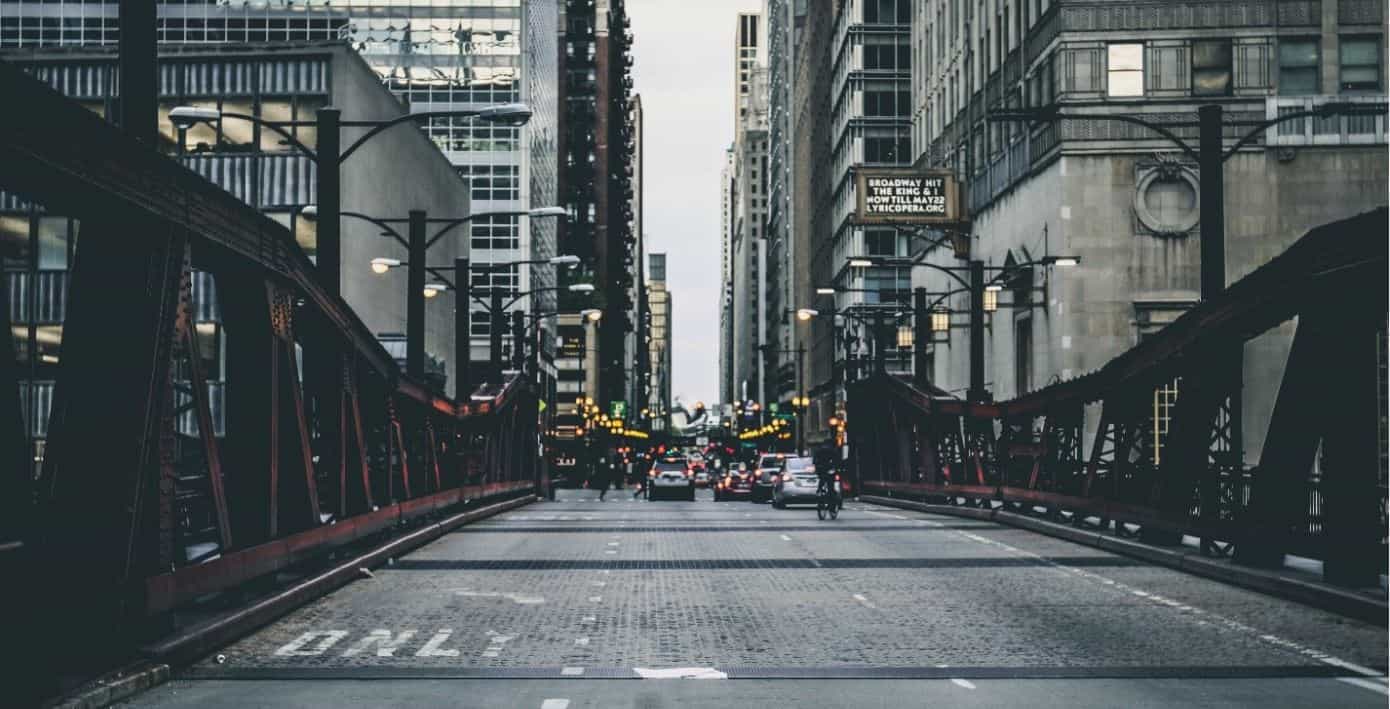
Busy Moving Times in Chicago
- May and August: Chicago is home to many great colleges, but this means the beginning and end of the school year tend to be very busy.
- St. Patrick’s Day Weekend: Chicagoans love St. Patty’s Day; in fact, Chicago was named one of the best places to celebrate the holiday. Between dying the Chicago River green, the countless bar crawls, and infinite tourists visiting that weekend, it’s probably best not to try and move mid-March.
- Chicago Marathon: Each year Chicago hosts the Chicago Marathon. Though it’s exciting, the city has to close down a lot of streets for the race to happen, which can cause detours and heavy traffic.
- Lollapalooza: This four-day music festival has become one of the most exciting weekends of the year in Chicago. But the festivities attract a lot of travelers and make it a bit harder to make way through the city.
- Chicago Street Festivals: There is always something exciting happening in the diverse neighborhoods of Chicago, especially in the summer. Most Chicago street festivals require road blocking that can last for days, so make sure to research your neighborhood’s events before moving day.
Get to know Chicago and your new home with these after moving tips. We highly recommend taking in a game at historic Wrigley Field!
Dallas/Fort Worth
The Dallas Fort Worth metropolitan area is one of the fastest growing in the country. If your next adventure is taking you to the Lone Star State, these tips might help make the move a little smoother:
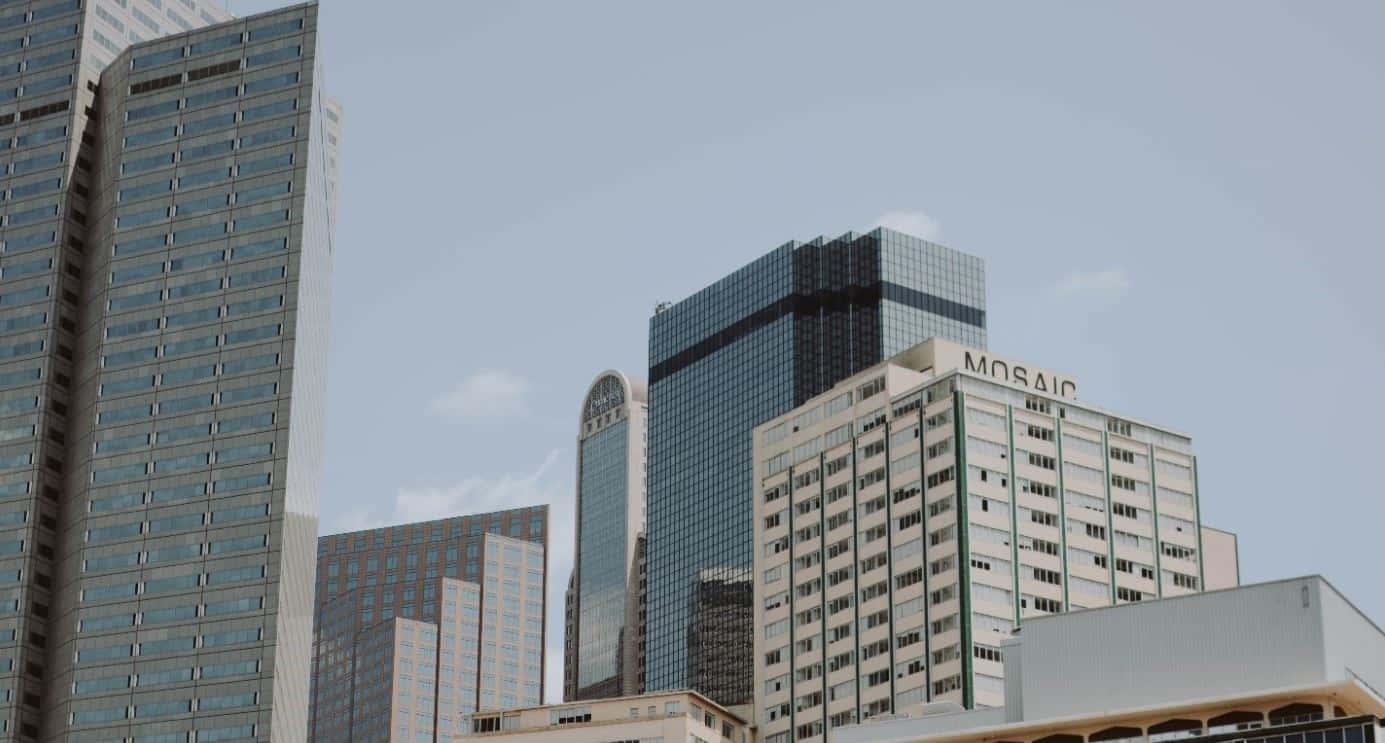
DFW Weather
North Texas is a humid subtropical climate known for its hot summers. While warm weather is ideal for moving, it does come with its own problems.
- Hot Temperatures: Doing heavy lifting and moving in hot weather can cause physical discomfort, but it also poses other risks like sun poisoning and heat stroke.
- Thunderstorms: Annual precipitation varies considerably, from less than 20 inches to more than 50. Most of this rain is a result of thunderstorm activity which can potentially cause flash flooding and dangerously high winds.
City Restrictions in DEW
Both Dallas and Fort Worth have rules on parking in certain areas of their respective cities – especially if you’re moving to a busy area downtown.
- Dallas: If you’re moving into the heart of Dallas, be sure to safely park your car and moving truck in a non-invasive The City of Dallas will ticket cars going against their posted street signs and at worst will boot, tow, or impound vehicles.
- Fort Worth: Many of the Fort Worth hot spots offer free parking garages and lots, while the streets are usually metered. Though these parking options are free for visitors, chances are they won’t accommodate a large truck.
If you find free street parking in either city, always make sure you never block hydrants, active driveways, abuse time limits in a standing zone, or double park.
Apartment Requirements in DEW
Luxury buildings, privately-owned buildings, and apartment complexes all have different moving day rules for new tenants. Take some time before moving day to ask your landlord or property manager about these things:
- Elevators: Buildings with elevators often block out certain times they can be used for moving purposes. This means you’ll need to contact your building and reserve a time in advance. If your building does not have an elevator, take note of the available space so you can assess what furniture will make it up to your unit.
- Loading Dock: Larger buildings usually have a street-level back entrance with a wide, accessible doorway and sometimes a service elevator. If your building does have a loading dock, chances are residents are required to move in there.
- Designated Doors: In lieu of a loading dock, some buildings prefer to have residents use a more discrete entrance to avoid heavy traffic in the front door and lobby.
Neighborhood Limitations in DEW
Even suburban neighborhoods come with their own set of written and unwritten rules. Be cautious of these common restrictions in single-family home neighborhoods:
- HOA Rules: Some homeowner associations (HOA) have rules regarding what can and can’t happen in the neighborhood like tampering with landscaping, blocking certain areas, and other inconveniences that could happen while moving.
- Noise: Whether or not it’s officially enforced through an HOA, it’s always good to be mindful of your noise level if you will be moving in early in the morning or late in the evening.
- Blocking Driveways: This is something city and suburban dwellers always agree on: never block a driveway.

Busy Moving Times in DFW
- Six Flags Over Texas: This classic theme park sits right in the middle of Dallas and Fort Worth in Arlington, Texas. Six Flags’ operating season is nearly year-round, from late February through early January, but the summertime is always busiest. While weekdays are tame, traffic can be brutal surrounding the park during the summer weekends.
- State Fair of Texas: The State Fair of Texas was established in 1886 and is the longest-running fair in the United States. It’s also one of the largest state fairs, attracting huge crowds to Dallas and the nearby areas each fall.
- Juneteenth Celebration: Occurring every year on June 19th, the Juneteenth Celebration commemorates the announcement of the emancipation of slavery in the state of Texas in 1865. This and other DFW events may bring on certain celebrations such as street festivals, which could potentially cause traffic, detours, and delays.
Denver
The Mile-High City is a top destination for people of all ages, so if you’re thinking of moving to Denver, you’re certainly not alone. With trendy neighborhoods for millennials, a variety of jobs in Manufacturing, Bioscience and more, and beautiful surroundings in the foothills of the Rocky Mountains, Denver has something for just about everyone.
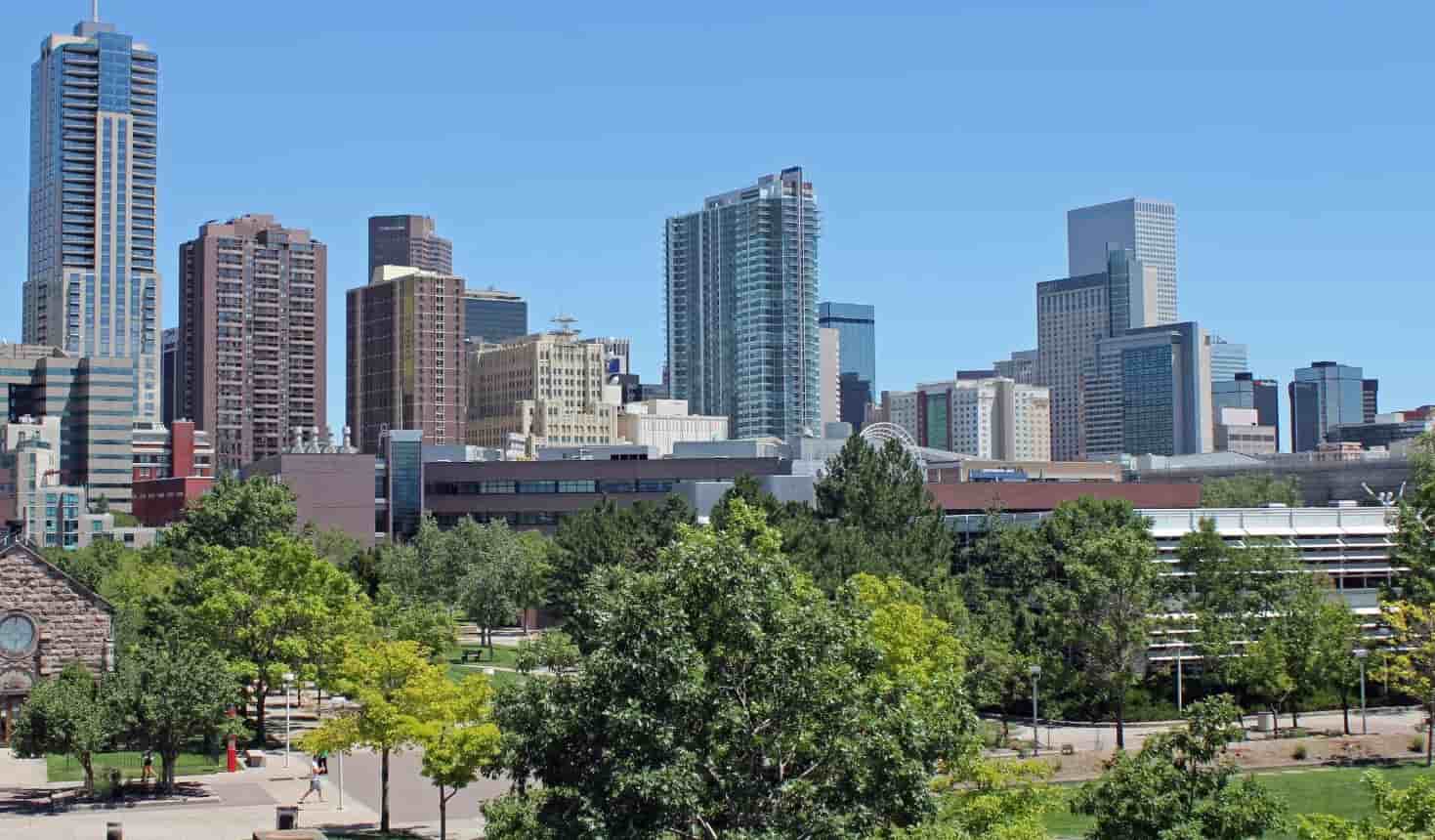
Denver Weather
Overall, Denver enjoys, sunny weather and mild temperatures are perfect for people who want to escape extreme temperatures. Remember, though: there is a reason Denver is called the Mile-High City. If you’re new to the area, it may take you some time to get used to the thinner air, and you’ll need to take precautions to adjust to the higher altitude, such as:
- Drinking plenty of water. The arid climate means you’ll get dehydrated about twice as fast as you would at sea level.
- Taking frequent breaks while unpacking or performing any physical activity
- Use sunblock. Lower amounts of humidity in the air here means less protection from the sun, which in turn means sunburns happen faster in Denver.
City Restrictions in Denver
If you’ve never been to Denver before, driving around the city without getting turned around can be a challenge. To help, here are a few tips for driving in Denver:
- Mountains to the West: The Rocky Mountains are on the West Side of Denver, and can be seen from almost anywhere in the city. This makes it easy to reorient yourself if you get lost!
- The Highways: The two main highways in Denver are the I 70 and I 25. I 70 runs North-South, and I 25 runs East-West, making it easier to get from one side of the city to another.
- Winter Driving: Denver County gets more than 50 inches of snow per year, and the city takes winter driving seriously. According to the Traction Law (AKA Code 15), all vehicles in Denver must have either four-wheel or all-wheel drive, or be equipped with snow tires during snowy weather.
Apartment Requirements in Denver
Whether you’re moving into a privately-owned building or luxury high-rise, most apartment buildings have certain moving day rules for their residents. Every apartment is different, but you should ask your landlord or property manager about these things:
- Elevators: Buildings with elevators often block out certain times they can be used for moving purposes. This means you’ll need to contact your building and reserve a time in advance. If your building does not have an elevator, take note of the available space so you can assess what furniture will make it up to your unit.
- Loading Dock: Larger buildings usually have a street-level back entrance with a wide, accessible doorway and sometimes a service elevator. If your building does have a loading dock, chances are residents are required to move in there.
- Designated Doors: Instead of a loading dock, some buildings prefer to have residents use a more discrete entrance to avoid heavy traffic in the front door and lobby.
Neighborhood Limitations in Denver
Even if you’re not in the hustle and bustle of downtown Denver, you still may run into issues with a single-family home. Check ahead of time to see if your neighborhood has any of these limitations:
- HOA Rules: Some homeowner associations (HOA) have rules regarding what can and can’t happen in the neighborhood like tampering with landscaping, blocking certain areas, and other inconveniences that could happen while moving.
- Noise: Whether or not the HOA enforces noise limits, it’s always good to be mindful of your noise level if you will be moving in early in the morning or late in the evening.
- Blocking Driveways: This is something city, and suburban dwellers always agree on: never block a driveway.
Busy Moving Times in Denver
- Colfax Marathon: This is the largest running event in Denver, with more than 20,000 participants. The races include a full marathon, half marathon, relay marathon, 10K, and 5K and take place over two days each May. Check the race maps to see what roads will be closed during the races, and give yourself extra time to drive through downtown traffic.
- Cinco de Mayo: Are you moving to Denver at the beginning of May? Make sure you’re prepared for increased traffic, road closures, and limited parking during the city’s Cinco de Mayo Festival on May 4th & 5th, which brings more than 400,000 locals and tourists together for the celebration.
- Greek Festival: Another sizeable cultural festival in Denver, the city’s annual Greek Festival attracts more than 25,000 visitors every June. The two-day festival includes hundreds of food and shopping vendors, along with cultural events and live performances. Expect traffic delays and detours if you’re moving to the area during the Greek Festival.
- Denver Parade of Lights: As part of the city’s Christmas celebration, the City of Denver hosts an annual parade at the beginning of each December. The parade of lights includes more than 40 floats, giant character balloons, marching bands and more, all illuminated by colorful light displays. Thousands attend the parade each year, which starts at the Civic Center and travels through much of downtown. To see which roads will be blocked off, check out this helpful page.
- Other Denver Events: With a total population of over 700,000 people, there’s always something going on in the Mile High City. Before your moving day, check online to see if any events are happening in your neighborhood, so you can plan accordingly.
Detroit
Moving to Detroit is an excellent option for anyone, whether you’re a millennial looking to start a career at one of the city’s many startups, a family looking for an affordable place to settle down, or an outdoor adventurer, ready to take on Detroit’s 200+ miles of trails and ample coastline. For an easier moving day in Motor City, consider the tips below as you make your travel plans.
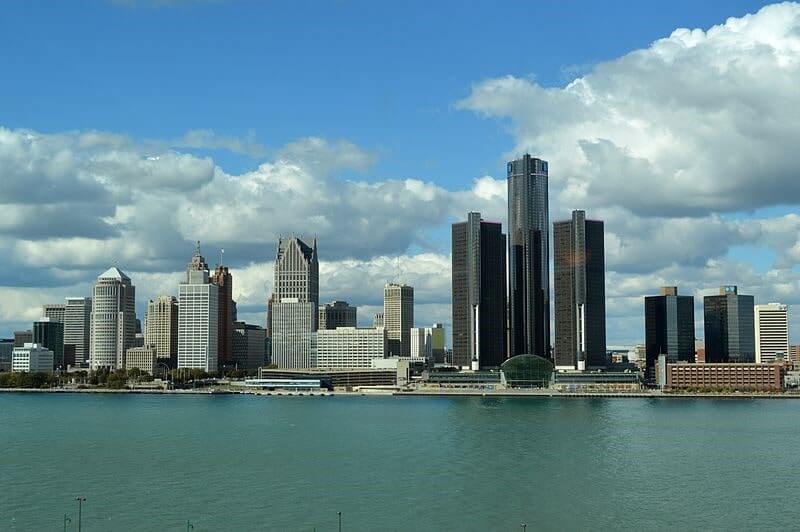
Detroit Weather
The city of Detroit embraces seasonal weather, with an average high temperature of 84 degrees during the height of the summer, and a low of just 15 degrees in the dead of winter. The weather here can seemingly change in an instant, and some days, you’ll see everything from rain to sleet to snow all within a few hours, before the sun miraculously reappears. No matter what time of year you’re moving to Detroit, check the forecast a week before and again a day before you move to make sure you’re prepared for any weather.
City Restrictions in Detroit
If you’ve never been to Detroit before, you may find driving and parking in the city confusing or even frustrating. Keep these driving and parking tips in mind for a less stressful moving day in Detroit:
- The Michigan Left: When you want to turn left onto a divided highway in Michigan, you turn right and approach a turnaround, where you can perform a legal U-turn. Since through traffic is also allowed at these intersections, it can seem complicated at first, so keep an eye on road signs, and take your time to stay safe.
- Watch Your Speed: Detroit has a lower citywide speed limit than most cities; unless otherwise specified, the speed limit within the city is 25 MPH. Take it slow, and remember that speeding more than 10 MPH above the limit can result in a $300 fine, and points on your license!
- Metered Parking: Street parking in Detroit is not free, and meters here usually cost $2/hour. You can pay at a parking station, or use the ParkDetroit mobile payment app on your smartphone.
Apartment Requirements in Detroit
Whether you’re moving into a privately-owned building or luxury high-rise, most apartment buildings have certain moving day rules for their residents. Every apartment is different, but you should ask your landlord or property manager about these things:
- Elevators: Buildings with elevators often block out certain times they can be used for moving purposes. This means you’ll need to contact your building and reserve a time in advance. If your building does not have an elevator, take note of the available space so you can assess what furniture will make it up to your unit.
- Loading Dock: Larger buildings usually have a street-level back entrance with a wide, accessible doorway and sometimes a service elevator. If your building does have a loading dock, chances are residents are required to move in there.
- Designated Doors: Instead of a loading dock, some buildings prefer to have residents use a more discrete entrance to avoid heavy traffic in the front door and lobby.
Neighborhood Limitations in Detroit
Even if you’re not in the hustle and bustle of downtown Detroit, you still may run into issues with a single-family home. Check ahead of time to see if your neighborhood has any of these limitations:
- HOA Rules: Some homeowner associations (HOA) have rules regarding what can and can’t happen in the neighborhood like tampering with landscaping, blocking certain areas, and other inconveniences that could happen while moving.
- Noise: Whether or not the HOA enforces noise limits, it’s always good to be mindful of your noise level if you will be moving in early in the morning or late in the evening.
- Blocking Driveways: This is something city, and suburban dwellers always agree on: never block a driveway.
Busy Moving Times in Detroit
- Detroit Marathon: The Detroit Free Press Chemical Bank Marathon takes place in mid-October every year. In addition to the main race, runners can participate in a marathon relay, competitive 1-mile run, a 5K and more. View the course maps so you can plan around road closures if you’re moving to Detroit during the marathon.
- Movement Music Festival: Did you know Detroit is the birthplace of techno music? During Memorial Day Weekend each May, thousands of fans come to Detroit to celebrate this unique genre with incredible live performances in Hart Plaza. Plan ahead and leave yourself extra travel time due to increases in traffic during the festival.
- Detroit River Days: More than 150,000 people come to Denver to celebrate the city’s maritime history along the Detroit Riverwalk during the annual River Days Celebration in June. The weekend festival includes live musical performances, an air show, and of course, plenty of activities out on the water.
- More Events and Festivals in Detroit: Like any large city, Detroit hosts hundreds of local events throughout the year, from small neighborhood block parties to concerts and cultural festivals which bring thousands of visitors to the area. Before your move, be sure to search online for any events which might disrupt your moving route, and think ahead to avoid traffic and manage detours.
Houston
Houston is best known as the home to the Johnson Space Center, but it also boasts thriving theater and historic districts, 19th-century architecture, and fantastic restaurants. As the fifth most populous city in the nation and second most populous in Texas, Houston is truly an exceptional place to call home.

Houston Weather
Houston’s climate is humid subtropical, so it’s certainly not a chilly place. Averaging only 18 days per year of temperatures being 32 degrees or below, you can normally bank on Houston to have short winters and very long summers.
- Hot Temperatures: Houston averages 99 days per year with hot temperatures of 90 degrees or higher, though temperatures mostly remain between 60 and 80 degrees throughout the rest of the year. In a climate like Houston’s, you may face risks such as sun poisoning and heat stroke.
- Rain and Humidity: Houston is notoriously rainy and gets about 45 inches of precipitation each year – even more rain than Seattle! If the heat is high you can bet the humidity will be higher, as the sun and precipitation are usually at maximum capacity in Houston.
City Restrictions in Houston
Houston is a large metropolis and faces the same parking issues as other major cities. Houston mostly has on-street parking which is free after 6 pm Monday-Saturday, and all day on Sunday. The rest of the time, on-street parking is metered with 3-hour limits.
When parking in Houston, pay close attention to posted signs, road markings, and time limits. You can also buy a Downtown Hopper Pass, a one-time daily fee which allows you to move from block to block and meter to meter without paying each time. The Downtown Hopper Pass may be ideal for moving day in the city.
Apartment Requirements in Houston
Luxury buildings, privately-owned buildings, and apartment complexes all have different moving day rules for new tenants. Take some time before moving day to ask your landlord or property manager about these things:
- Elevators: Buildings with elevators often block out certain times they can be used for moving purposes. This means you’ll need to contact your building and reserve a time in advance. If your building does not have an elevator, take note of the available space so you can assess what furniture will make it up to your unit.
- Loading Dock: Larger buildings usually have a street-level back entrance with a wide, accessible doorway and sometimes a service elevator. If your building does have a loading dock, chances are residents are required to move in there.
- Designated Doors: In lieu of a loading dock, some buildings prefer to have residents use a more discrete entrance to avoid heavy traffic in the front door and lobby.
Neighborhood Limitations in Houston
Even suburban neighborhoods come with their own set of written and unwritten rules. Be cautious of these common restrictions in single-family home neighborhoods:
- HOA Rules: Some homeowner associations (HOA) have rules regarding what can and can’t happen in the neighborhood like tampering with landscaping, blocking certain areas, and other inconveniences that could happen while moving.
- Noise: Whether or not it’s officially enforced through an HOA, it’s always good to be mindful of your noise level if you will be moving in early in the morning or late in the evening.
- Blocking Driveways: This is something city and suburban dwellers always agree on: never block a driveway.

Busy Moving Times in Houston
- Houston Livestock Show and Rodeo: RodeoHouston is the largest livestock exhibition and rodeo in the world, lasting 20 days each year. Over 2.5 million people attend the show and its other events, including Go Texan Day in February. It’s no surprise RodeoHouston causes heavy traffic and congestion in Houston.
- Space Center Houston: Many people flock to Texas to visit the famous Space Center in Houston. The exploration learning center is one of the main attractions in the city and draws large crowds, with peak attendance on weekends, holidays, and throughout the summer.
Indianapolis
Are you planning a move to Indianapolis? Congratulations! This city is an excellent choice for anyone, whether you’re a recent graduate or an established professional with a family. In addition to the low cost of living and job availability in manufacturing and technology, Indianapolis has dozens of amazing neighborhoods, and plenty of entertainment and nightlife options, too. Before your moving day, read these tips to make your relocation experience smooth and easy.
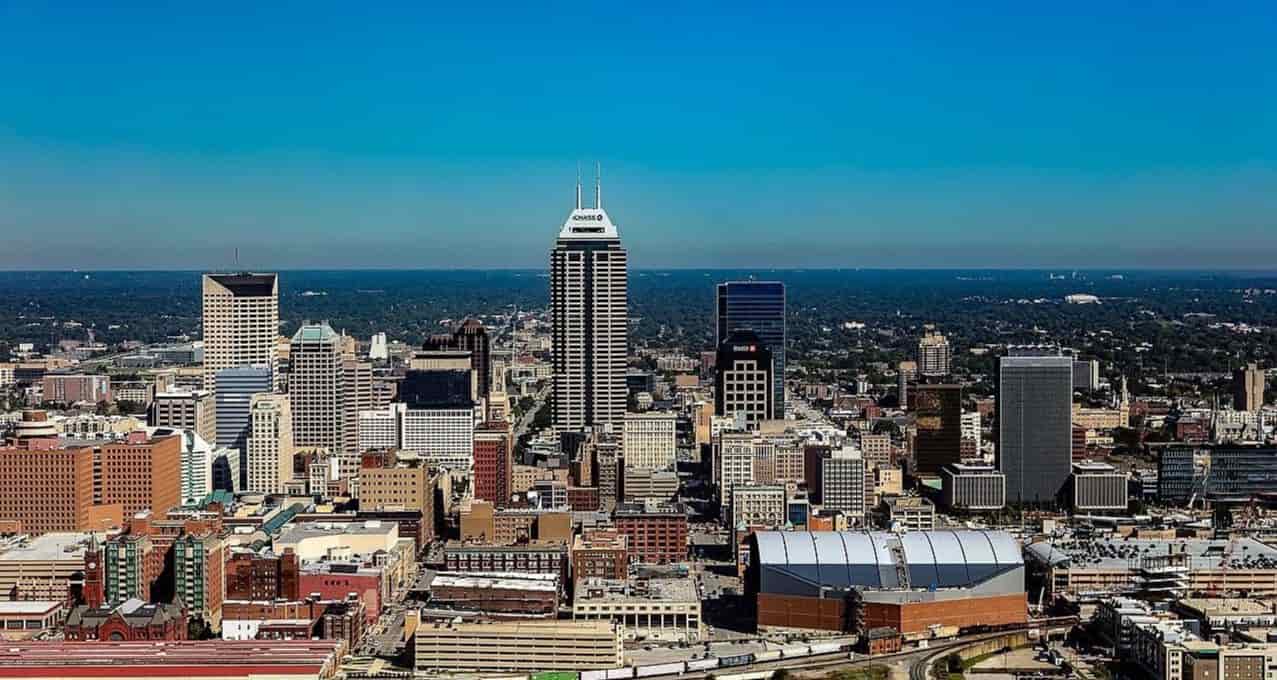
Indianapolis Weather
Indiana’s capital is located in the center of the state and has a seasonal climate with warm, humid summers and cold, snowy winters. The area gets 43 inches of rain every year, and less than the national average for sunny days in a year. Though Indianapolis is far enough away from the Great Lakes to avoid the worst lake-effect snowfall, the city still gets 22 inches of snow each year and traveling storms can bring white-out conditions to the area at times. Protect your family and your belongings by monitoring the forecast before your moving day, and always be willing to go to Plan “B” if the weather outside is dangerous.
City Restrictions in Indianapolis
Like any sizeable city, driving in Indianapolis can be confusing, especially if you’re new to the area. Stay safe on the roads in Indianapolis, and enjoy a stress-free moving day experience with these parking and driving tips:
- Street Parking: In addition to paid parking garages, there are more than 73,000 metered parking spaces in Indianapolis. Most metered spaces in Downtown are enforced from 7AM-9PM and cost about $1.50/hour. Before leaving your car in any spot, read the nearby parking signs carefully to ensure you’re parked legally and won’t get a ticket.
- Roundabouts: Indianapolis has several roundabouts you’ll need to navigate when driving Downtown. The rule of thumb for any roundabout is: people in the circle have the right of way, and the right lane of the circle is for exiting cars only.
- The Fast Lane Law: This law helps reduce traffic buildup in Indiana and requires a driver to move from the left-most lane to the right if there are other cars approaching from behind. Not moving over could cost you up to $500 and is actively enforced by Indiana’s State Troopers.
Apartment Requirements in Indianapolis
Whether you’re moving into a privately-owned building or luxury high-rise, most apartment buildings have certain moving day rules for their residents. Every apartment is different, but you should ask your landlord or property manager about these things:
- Elevators: Buildings with elevators often block out certain times they can be used for moving purposes. This means you’ll need to contact your building and reserve a time in advance. If your building does not have an elevator, take note of the available space so you can assess what furniture will make it up to your unit.
- Loading Dock: Larger buildings usually have a street-level back entrance with a wide, accessible doorway and sometimes a service elevator. If your building does have a loading dock, chances are residents are required to move in there.
- Designated Doors: Instead of a loading dock, some buildings prefer to have residents use a more discrete entrance to avoid heavy traffic in the front door and lobby.
Busy Moving Times in Indianapolis
- The Indianapolis 500: Without a doubt, this is the biggest race of the year for any NASCAR fan. Hundreds of thousands of racing fans come to Indianapolis each May to see 33 cars race for the coveted winner’s trophy. Expect increased traffic in the hours leading up the event, and after the race is finished as people return to their hotels and homes.
- Indianapolis Monumental Marathon: This is one of the largest marathons in the US, with thousands of runners and even more spectators coming to the city to cheer them on. The race starts and ends at the State Capitol Building. The race starts and ends at the State Capitol Building, so be sure to check out the race route and associated road closures.
- Indiana State Fair: The State Fair runs for 17 days during the Month of August, and includes dozens of competitive events, including livestock shows, a wine and spirits competition and the Miss Indiana State Fair Pageant. While the fair doesn’t take place directly Downtown and instead takes place at the State Fairgrounds, the influx of visitors to Indianapolis will likely mean more traffic and limited parking in the city.
- Circle of Lights: For more than 50 years, the City of Indianapolis has celebrated the winter Holidays with the Circle of Lights, the ceremonial lighting of the world’s largest Christmas tree, which is followed by a concert featuring an array of performers! More than 100,000 people attend the event each year, so expect large crowds downtown, some closed roads, and congested roadways.
Jacksonville
Named the #2 Top City Millennials are Moving to by Forbes Magazine, Jacksonville has something to offer professionals, couple and families of all ages. From the sunny weather to the beautiful seaside views and beaches, if you’re considering moving to Jacksonville, you’re making a fantastic choice.
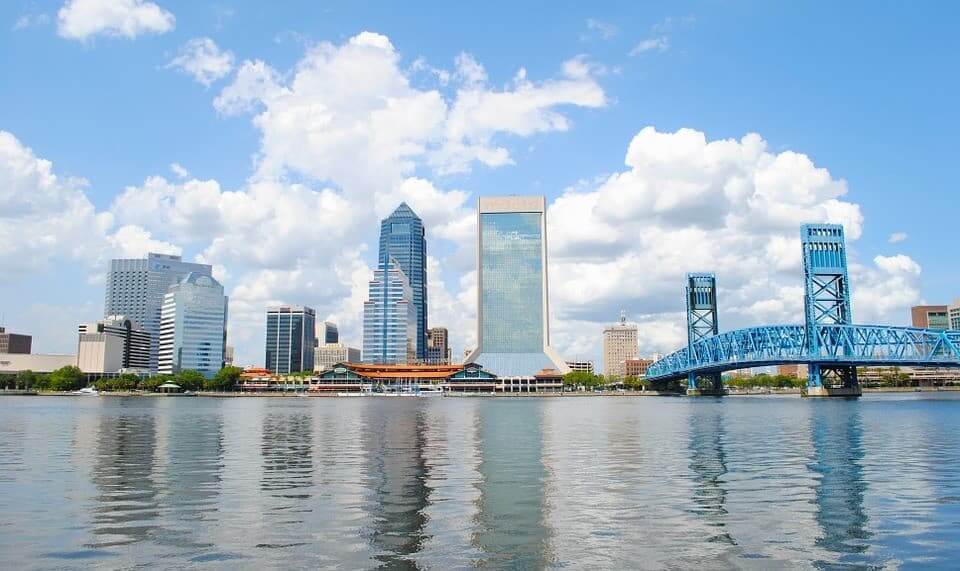
Jacksonville Weather
Florida is called the Sunshine State for a reason, and Jacksonville follows suit, with 221 sunny days per year. The temperature in the city can get as high as 90 degrees in Summer months, and the high humidity in the city makes the heat even more oppressive. If you’re moving to Jacksonville from June-September, make sure to stay hydrated, take breaks, and use sunblock to protect your skin while unloading your truck.
City Restrictions in Jacksonville
- SunPass: Some tolls roads in Florida only take the State-specific SunPass, and won’t accept E-Z Pass placards as payment. If you don’t have a SunPass, make sure you bring cash in your car.
- HOV Lanes: Florida highways also have carpool lanes to help you avoid rush hour traffic, but make sure you have the required amount of passengers to avoid a hefty fine.
- Parking in Jacksonville: Street parking in Jacksonville is free on weekends and after 6 PM. Most meters in the city cost $0.25 per half hour and can be paid with either cash or credit card.
- IMPORTANT: If you don’t see a meter, do not park. All street parking in Downtown Jacksonville is metered, and parking in a spot without a meter is illegal.
Apartment Requirements in Jacksonville
Whether you’re moving into a privately-owned building or luxury high-rise, most apartment buildings have certain moving day rules for their residents. Every apartment is different, but you should ask your landlord or property manager about these things:
- Elevators: Buildings with elevators often block out certain times they can be used for moving purposes. This means you’ll need to contact your building and reserve a time in advance. If your building does not have an elevator, take note of the available space so you can assess what furniture will make it up to your unit.
- Loading Dock: Larger buildings usually have a street-level back entrance with a wide, accessible doorway and sometimes a service elevator. If your building does have a loading dock, chances are residents are required to move in there.
- Designated Doors: Instead of a loading dock, some buildings prefer to have residents use a more discrete entrance to avoid heavy traffic in the front door and lobby.
Neighborhood Limitations in Jacksonville
Even if you’re not in the hustle and bustle of downtown Jacksonville, you still may run into issues with a single-family home. Check ahead of time to see if your neighborhood has any of these limitations:
- HOA Rules: Some homeowner associations (HOA) have rules regarding what can and can’t happen in the neighborhood like tampering with landscaping, blocking certain areas, and other inconveniences that could happen while moving.
- Noise: Whether or not the HOA enforces noise limits, it’s always good to be mindful of your noise level if you will be moving in early in the morning or late in the evening.
- Blocking Driveways: This is something city, and suburban dwellers always agree on: never block a driveway.
Busy Moving Times in Jacksonville
- The Gate River Run: This is the largest 15K run in America, and brings more than 20,000 runners to Jacksonville each March. The course runs through the center of downtown Jacksonville, so folks moving to Jacksonville during the race should expect road closures and detours, along with large crowds of pedestrian spectators.
- Greater Jacksonville Kingfish Tournament: Held each year in July, the Jacksonville Kingfish Tournament is the largest event of its kind on the east coast. More than 300 boats participate in a variety of fishing and boating events, and spectators line the shores to watch. Watch out for road closures, and expect to see dozens hitched boats on the roads before and after the tournament.
- Jacksonville Jazz Festival: Taking place on Memorial Day weekend each year, the Jacksonville Jazz Festival is a three-day celebration of all things music. Live performances take place on two outdoor stages, while food and artisan vendors set up shop to serve thousands of guests in the new Jazz Marketplace. Expect increased traffic during the festival, as well as less available parking!
- 2 with DONNA: This marathon is the only one in the country whose funds goes solely to breast cancer research. The weekend event takes place in February and includes a 5K, half marathon and full marathon for participating runners to choose from. Check your moving route if arriving during the marathon, and plan for detours!
- TaxSlayer Gator Bowl: The taxpayer Gator Bowl is Jacksonville’s annual New Year’s Eve college football game, which takes place at the TIAA Bank Field. There are also many NYE parties and events taking place throughout the city, so you should be extra careful if moving to Jacksonville during the holiday.
- Other Local Events and Festivals: Jacksonville is a city that works hard and plays hard. Before you move, check Google to see if any local events are happening in your new hometown, and plan your route accordingly for a smooth moving day!
Las Vegas
Tourists love Las Vegas for its incredible casinos, bustling nightlife and headlining shows, but this city has more to offer than just weekend attractions. Las Vegas is a technology and healthcare hub with plenty of job opportunities, unique culture, and spirit, and has dozens of trendy neighborhoods that aren’t along the Strip. If you’re planning a move to the area, take a look at the tips below for a stress-free moving day.
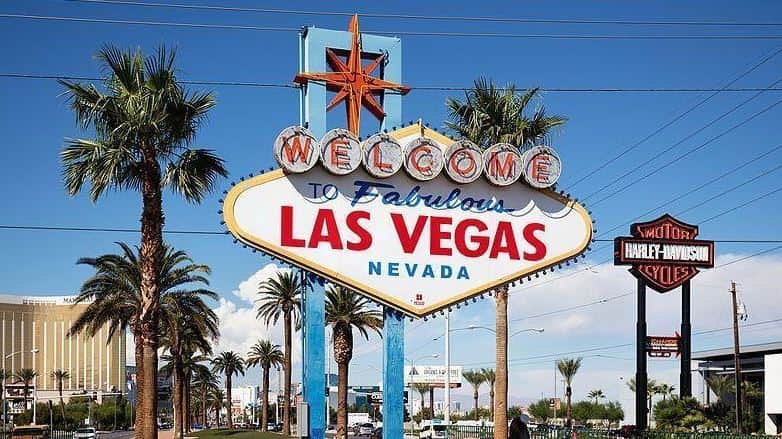
Las Vegas Weather
Las Vegas enjoys about 300 sunny days each year, nearly one hundred more than the national average of 205 days. There’s very little snow or rain here, so you won’t have to worry about precipitation n your moving day. However, the sun doesn’t always mean warm weather; although summers in Las Vegas can reach highs over 100 degrees, the city also frequently dips below freezing during winter months. Depending on the temperature outside, you should take precautions, such as layering outfits and wearing plenty of sunblocks, to make sure your moving day is as pain- and worry-free as possible.
City Restrictions in Las Vegas
There is so much going on in Vegas it’s easy to get lost in the city, especially if you’ve never been here before. Before you hit the road, read these tips to make your driving experience in Vegas a little easier.
- Parking: While some downtown parking is free, most spots are metered, so be sure to check the signs when you park to see time limits and the cost (it’s usually about $1 for an hour). Keep in mind some hotels will charge you for parking in their garages, even if you’re a guest!
- Right on Red: Turning right at a red light is Legal in Las Vegas, but make sure you come to a full and complete stop before you make your turn to avoid getting pulled over.
- Drunk Drivers: Sadly, drunk driving is still a major issue in Las Vegas, since so many tourists come here to party. Never drink and drive, and be extra aware of other vehicles on the road to keep yourself and your family safe. If you see someone driving erratically, call the police immediately, so they can get the driver off the road!
Apartment Requirements in Las Vegas
Whether you’re moving into a privately-owned building or luxury high-rise, most apartment buildings have certain moving day rules for their residents. Every apartment is different, but you should ask your landlord or property manager about these things:
- Elevators: Buildings with elevators often block out certain times they can be used for moving purposes. This means you’ll need to contact your building and reserve a time in advance. If your building does not have an elevator, take note of the available space so you can assess what furniture will make it up to your unit.
- Loading Dock: Larger buildings usually have a street-level back entrance with a wide, accessible doorway and sometimes a service elevator. If your building does have a loading dock, chances are residents are required to move in there.
- Designated Doors: Instead of a loading dock, some buildings prefer to have residents use a more discrete entrance to avoid heavy traffic in the front door and lobby.
Neighborhood Limitations in Las Vegas
Even if you’re not in the hustle and bustle of downtown Las Vegas, you still may run into issues with a single-family home. Check ahead of time to see if your neighborhood has any of these limitations:
- HOA Rules: Some homeowner associations (HOA) have rules regarding what can and can’t happen in the neighborhood like tampering with landscaping, blocking certain areas, and other inconveniences that could happen while moving.
- Noise: Whether or not the HOA enforces noise limits, it’s always good to be mindful of your noise level if you will be moving in early in the morning or late in the evening.
- Blocking Driveways: This is something city, and suburban dwellers always agree on: never block a driveway.
Busy Moving Times in Las Vegas
- Las Vegas NASCAR Weekend: This event takes place at the famed Las Vegas Motor Speedway during September, and is one of the most attended NASCAR races in the nation. In 2018, the event had a record 145,000 attendees and continues to grow in popularity every year. Expect significant traffic near the event grounds, as well as Downtown, since many visitors will be unfamiliar with the roads here.
- Electric Daisy Carnival: ECD is the largest Electronic Dance Music event in the country, and takes place during Memorial Day Weekend. Hundreds of thousands of visitors flock to Vegas to see live music performances, so you should expect limited parking and increased road congestion.
- Rock ‘N’ Roll Marathon Las Vegas: Vegas is just one of many cities that participate in the Rock ‘N’ Roll Marathon Series. The Las Vegas races occur in mid-November and include multiple events and thousands of runners. Take a look at the course maps to see which roads will be closed, and what areas to avoid in general.
- Other Las Vegas Events: What happens in Vegas is everything! Between the Strip itself, headlining concerts and other live performances, and seasonal events, there is almost always something going on in Las Vegas. Before you get here, run a quick Google search to see upcoming events in your area, and make a plan to ensure your moving day goes smoothly.
Los Angeles
Los Angeles is an alluring city, from the iconic Hollywood Sign to the Santa Monica Pier. The year-round warm weather and lively, diverse culture make the largest city on the West Coast a favorable place to live.

Los Angeles Weather
It’s hard to critique the weather in Los Angeles. The city has a Mediterranean climate, which is a type of dry subtropical climate. Los Angeles is vast, situated on the coast but spanning out to hills and mountains. This means there are a number of microclimates to be found, depending on which area you are in.
As a whole, Los Angeles has mild winters and warm summers. LA is mostly dry and experiences only about 15 inches of rain per year. The average temperatures in winter are around 68 degrees. The summers are hot in Los Angeles, reaching upwards of 100 degrees.
Los Angeles gets about 3,200 hours of sunshine annually, with bright skies year-round that are especially clear in the summer. One problem LA faces is the amount of pollution, which accumulates in the air between May and October, which can bother skin and irritate the respiratory system.
City Restrictions in Los Angeles
Los Angeles is a large city and its rules and regulations vary depending on the area. The city experiences gridlock traffic in some parts and minimal parking availability in others.
- HOV Carpool Lane: Most LA freeways have High Occupancy Vehicle (HOV) lanes on the far left of the road. These carpool lanes are designated for cars with at least two people inside. Keep in mind cars towing a trailer are never permitted in carpool lanes.
- Street Parking: In many suburbs and non-commercial neighborhoods, street parking is free. In higher-density areas (like Downtown LA) you’ll experience paid garages, lots, and metered parking. In some neighborhoods, residential permits are required.
- Curb Colors: The sidewalk curbs of Los Angeles are often marked with distinct colors symbolizing certain parking and standing restrictions. You can learn what each color means.
If you have a moving truck, ensure you can legally park on your street so you can avoid fines. Spot Angels can also help you find a parking spot in advance.
Apartment Requirements in Los Angeles
Luxury buildings, privately-owned buildings, and apartment complexes all have different moving day rules for new tenants. Take some time before moving day to ask your landlord or property manager about these things:
- Elevators: Buildings with elevators often block out certain times they can be used for moving purposes. This means you’ll need to contact your building and reserve a time in advance. If your building does not have an elevator, take note of the available space so you can assess what furniture will make it up to your unit.
- Loading Dock: Larger buildings usually have a street-level back entrance with a wide, accessible doorway and sometimes a service elevator. If your building does have a loading dock, chances are residents are required to move in there.
- Designated Doors: In lieu of a loading dock, some buildings prefer to have residents use a more discrete entrance to avoid heavy traffic in the front door and lobby.
Neighborhood Limitations in Los Angeles
Even suburban neighborhoods come with their own set of written and unwritten rules. Be cautious of these common restrictions in single-family home neighborhoods:
- HOA Rules: Some homeowner associations (HOA) have rules regarding what can and can’t happen in the neighborhood like tampering with landscaping, blocking certain areas, and other inconveniences that could happen while moving.
- Noise: Whether or not it’s officially enforced through an HOA, it’s always good to be mindful of your noise level if you will be moving in early in the morning or late in the evening.
- Blocking Driveways: This is something city and suburban dwellers always agree on: never block a driveway.
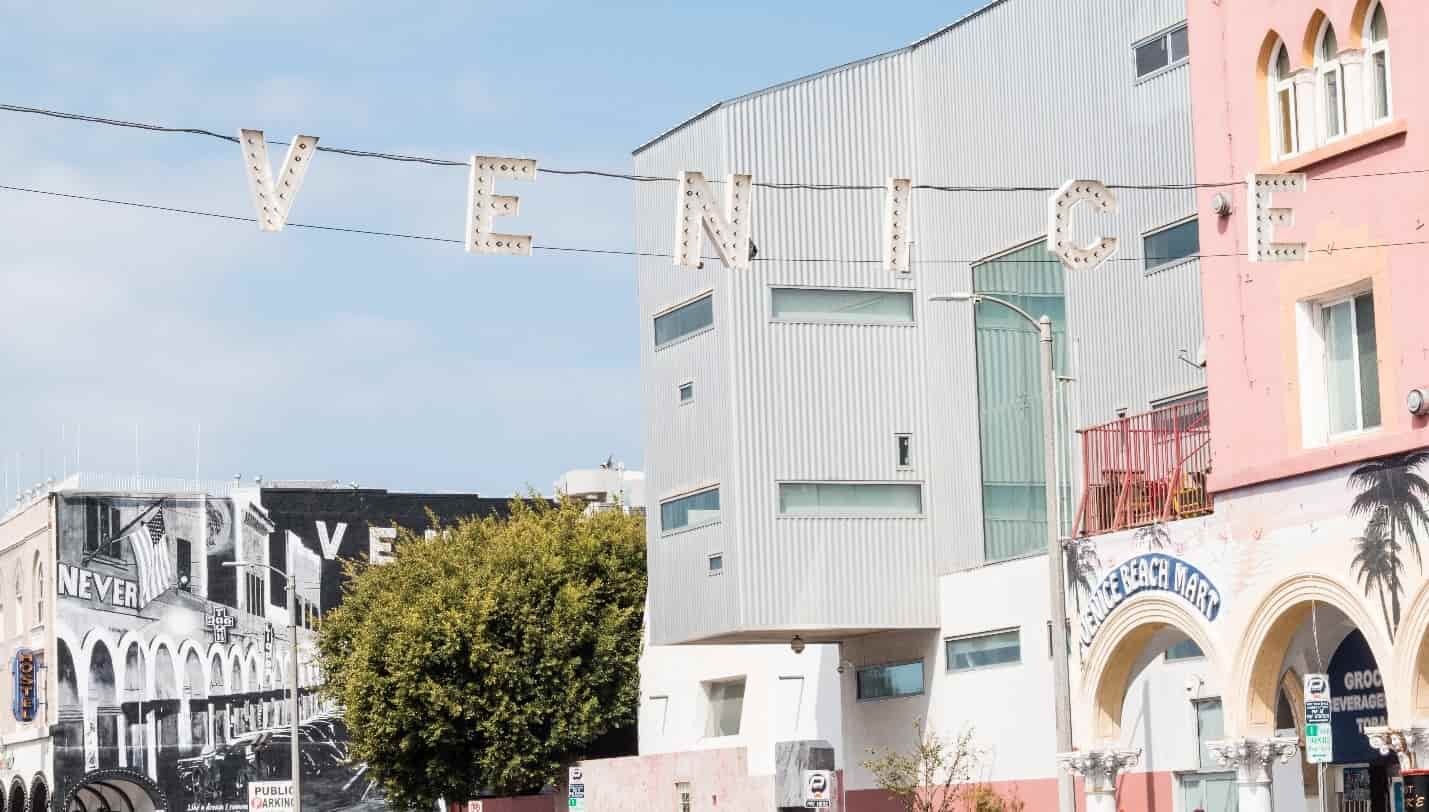
Busy Moving Times in Los Angeles
- Staples Center: The Staples Center is a multi-purpose arena in Downtown LA that’s home to multiple sports teams, such as the Los Angeles Lakers, and hosts various concerts and shows throughout the year. Due to its location in DTLA, pre and post-event traffic can be very impactful.
- LA Marathon: The Los Angeles Marathon occurs annually in either February or March. Like all city marathons, this one closes down streets and redirects both car and foot traffic in certain areas. The current route of the LA Marathon starts at Dodger Stadium and ends in Santa Monica.
- Hollywood Bowl: The Hollywood Bowl is a large outdoor amphitheater and hosts a number of shows and concerts. If you’re moving near the Hollywood Bowl, some of this show concert could potentially impact your route.
- Rose Bowl: Located in Pasadena, the Rose Bowl Game draws huge crowds each January 1st. New Year’s Day isn’t a popular day to move, but the Rose Bowl along with other NYE traffic could impact your New Year moving day.
- Film Festivals: As the film capital of the world, Los Angeles hosts dozens of film festivals each year. You can see a list of what they are, and where they happen, on Trip Savvy.
New York City
New York City is the nation’s largest city and is the cultural and economic hub of the United States. It doesn’t matter if you’re moving to Manhattan, The Bronx, Brooklyn, Staten Island, or Queens – New York City is a wonderful place to call home.
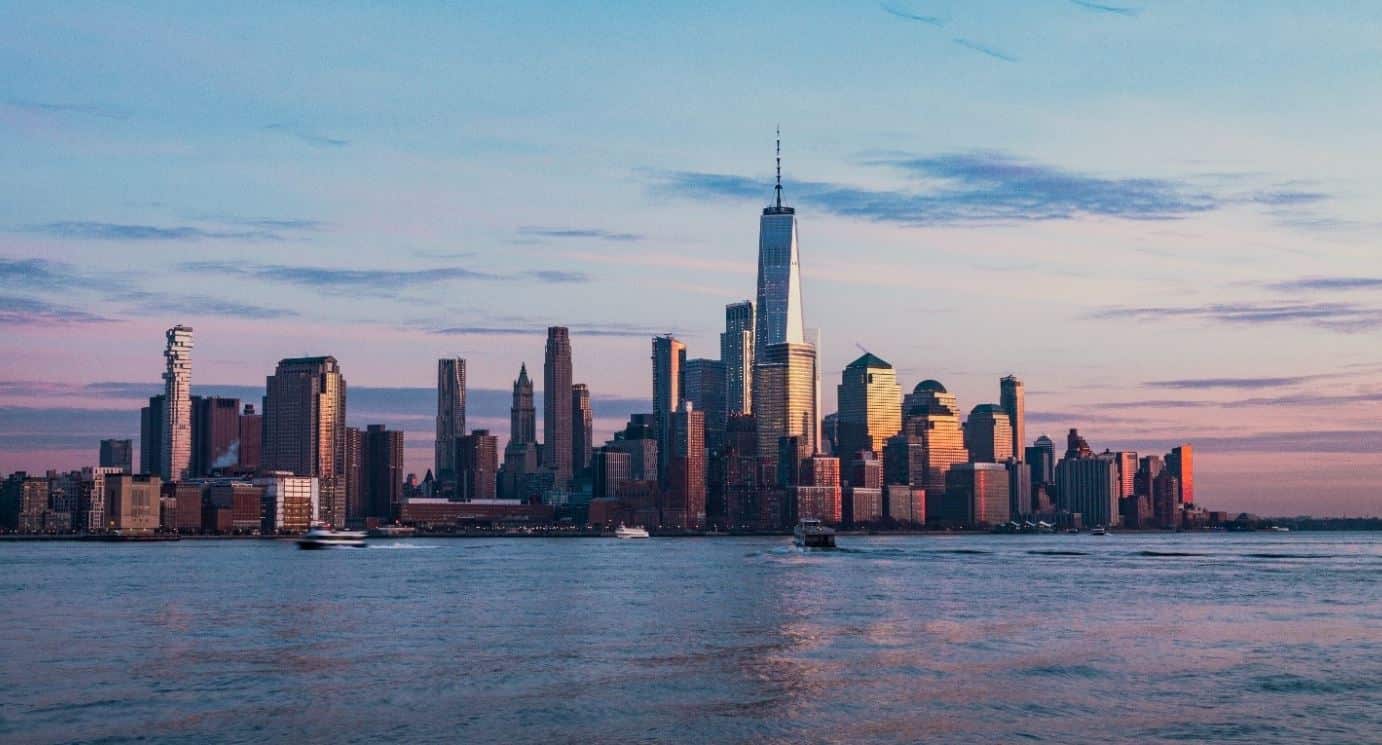
New York City Weather
The extreme southeastern part of New York State, where New York City is, lies in a warm humid subtropical climate zone. The weather varies considerably — Winter temperatures are in the 20s and 30s and can bring thirty inches of snow on average, while the summers are hot and humid in the 80s, and upwards of 90, degrees.
- Street plowing: Major roadways will be a higher priority for the city to plow compared to smaller, residential streets. Make sure you know the conditions, so your moving truck and car don’t slip and slide on the narrow and possibly one-way streets.
- Flight delays: If you’re travelling by plane to your new home in New York, be aware winter weather often delays or cancels flights at LaGuardia, John F. Kennedy, and Newark
- Clothing: New York City can be hot and humid in the summer, but the winter months can also be extreme. A warm jacket is important, but snow boots are a must to prevent you from falling while carrying boxes inside.
City Restrictions in New York City
About half of New York households are car-free – but that’s a different story when it comes to moving day. Whether you rent a moving truck or borrow a friend’s van, you’ll want to avoid tickets and fines when relocating to your new home.
- Parking: In a city of 8.6 million people, street parking is pretty difficult. There are many limitations such as time limits, street cleaning, construction, and metered parking. Though pricey, the most dependable place to park in NYC is a parking garage. Parking is a little easier in less crowded areas of certain boroughs, but garages are the most dependable in busy Manhattan.
- Snow: The City of New York closes certain streets in extreme weather conditions. Between the risk of closures and road plowing, it’s best to avoid street parking for too long when moving in the winter.
Apartment Requirements in New York City
Luxury buildings, privately-owned buildings, and apartment complexes all have different moving day rules for new tenants. Take some time before moving day to ask your landlord or property manager about these things:
- Elevators: Buildings with elevators often block out certain times they can be used for moving purposes. This means you’ll need to contact your building and reserve a time in advance. If your building does not have an elevator, take note of the available space so you can assess what furniture will make it up to your unit.
- Loading Dock: Larger buildings usually have a street-level back entrance with a wide, accessible doorway and sometimes a service elevator. If your building does have a loading dock, chances are residents are required to move in there.
- Designated Doors: In lieu of a loading dock, some buildings prefer to have residents use a more discrete entrance to avoid heavy traffic in the front door and lobby.
Neighborhood Limitations in New York City
Even suburban neighborhoods come with their own set of written and unwritten rules. Be cautious of these common restrictions in single-family home neighborhoods:
- HOA Rules: Some homeowner associations (HOA) have rules regarding what can and can’t happen in the neighborhood like tampering with landscaping, blocking certain areas, and other inconveniences that could happen while moving.
- Noise: Whether or not it’s officially enforced through an HOA, it’s always good to be mindful of your noise level if you will be moving in early in the morning or late in the evening.
- Blocking Driveways: This is something city and suburban dwellers always agree on: never block a driveway.
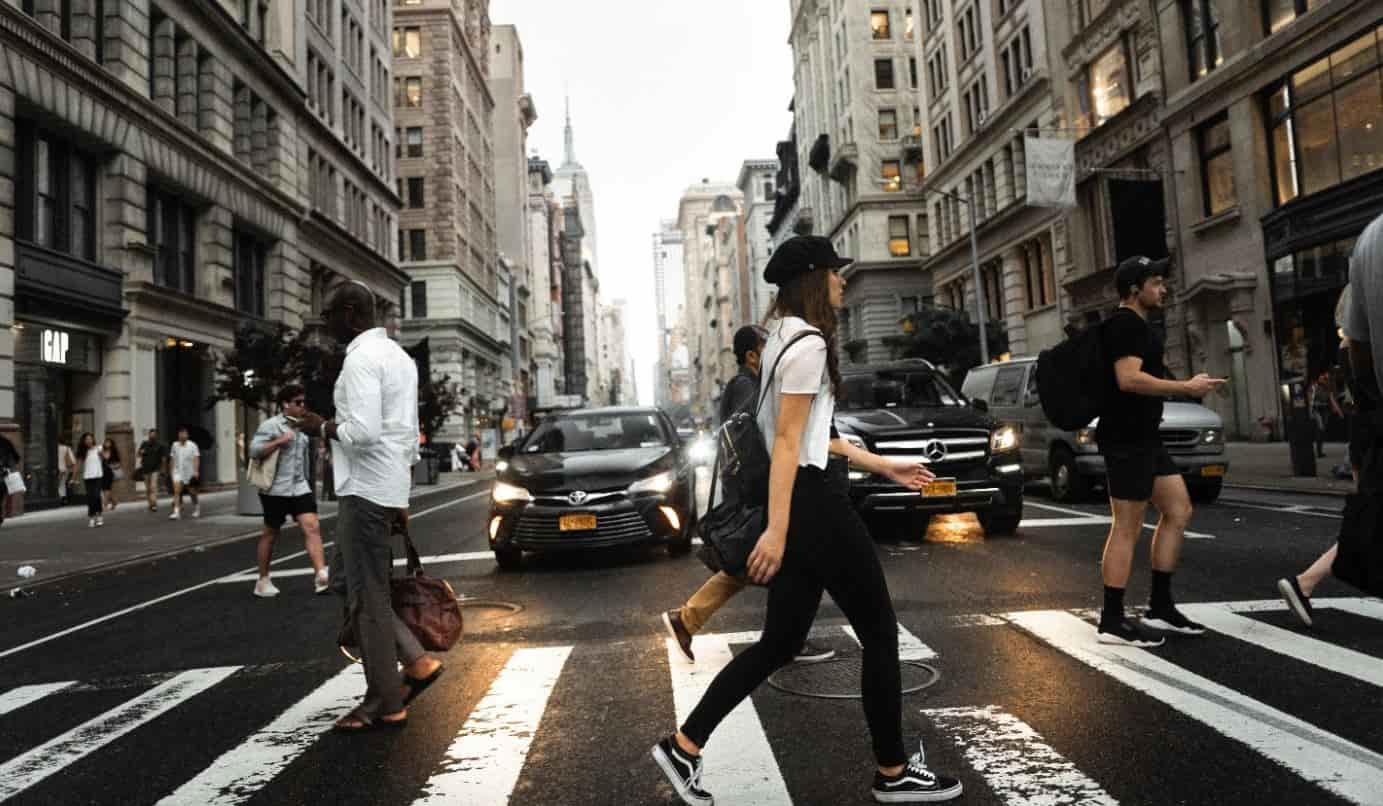
Busy Moving Times in New York City
- United Nations: New York is home to the headquarters of the United Nations, which hosts important government figures from the world throughout the year. When a United States or foreign official is in town, the city will close roads and redirect traffic throughout Manhattan.
- New York City Marathon: Over 50,000 participants cross the finish line of the New York City Marathon each year. Like any city, a marathon causes street closures and reroutes.
- The Governors Ball: The Governors Ball is an annual music festival held on Randall’s Island (separated from Manhattan by the Harlem River, and Queens by the East River). Festival goers add to the numbers by traveling to NYC for the impressive concert lineups.
- Tribeca Film Festival: The Tribeca Film Festival is one of the most prominent and well-known film festivals in the world. Held in the Manhattan neighborhood of Tribeca each year, the area becomes quite chaotic during TFF’s run.
- Madison Square Garden: Not only is The Garden home to the Knicks and Rangers, but it also hosts the most high-profile concerts in New York City. You can expect Midtown Manhattan to be crazy busy when Madison Square Garden hosts a show or game.
- Barclay’s Center: Located in the heart of Brooklyn, Barclay’s Center is home to the Brooklyn Nets and the New York Islanders. The indoor arena also hosts big-name concerts throughout the year. Since the arena seats 19,000 people, the area gets crowded before and after events.
- New York Fashion Week: The world’s most renowned fashion designers travel from around the world to attend New York Fashion Week. Held in February and September annually, NYFW shows are scattered about the city and could potentially disrupt normal traffic.
- SantaCon NYC: Perhaps one of the most famous pub crawls of all time, New York City annually hosts the largest SantaCon each December. If you’re moving during the holidays, watch out for tipsy Santas crossing the city streets.
Miami
Miami is known for its densely packed urban population, amazing weather, and incredible beaches. People in Miami work hard to play hard; the city is not only one of the top party cities in America, but also home to dozens of international corporations, and some of the biggest modeling agencies in the country.
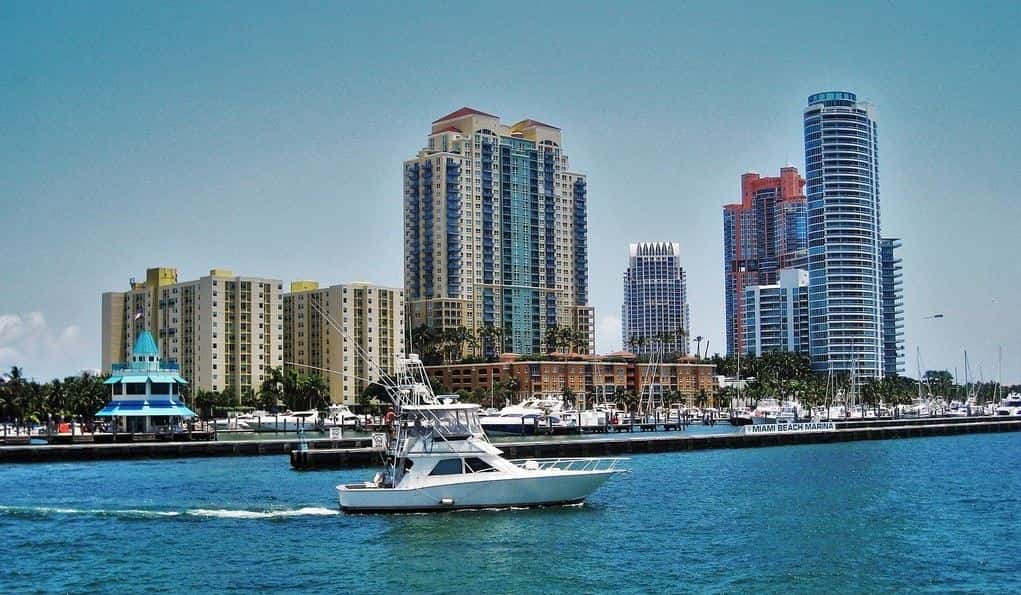
Miami Weather
If there’s one thing people know about Miami, it’s that this city is HOT. The average temperature in Miami stays between the 60s and 90s throughout the year, and the seaside location means you’ll be dealing with significant humidity, which can make a hot day feel sweltering. No matter what time of year you’re moving to Miami, protect yourself by wearing plenty of sunblocks, and drinking water to stay hydrated.
There’s a reason the University team for Miami is called the Hurricanes. Every year from June to November, huge storms build up in the Atlantic, and when they hit the Florida coast, they bring high-speed winds and torrential rain. Hurricanes can be extremely dangerous, and during larger hurricanes, the city may even be under evacuation orders to keep residents safe. Before your moving day, make sure to check the weather, and be prepared for potential storm conditions.
City Restrictions in Miami
- Parking: Miami purposefully doesn’t have enough parking. In 2005, the Miami 21 Code was written to help give residents and visitors an incentive to use mass transit, by limiting the parking options within the city. While finding a spot here will cost you less than NYC or Boston, the competition is high, and finding a place to put your moving van may be even more difficult. Plan out your route ahead of time, take advantage of the PayByPhone parking app, or find nearby garages to avoid a parking nightmare!
- Highways: While some highways in Miami are free to drive along, others, like the Florida Turnpike, require a toll. Note: Some tolls will accept E-Z Pass, but others require a Florida specific pass called SunPass. Make sure to read the signs as you approach the tollbooth!
- Carpool Lanes: I-95 is a free highway, but it also offers a paid express lane for cars that meet carpool requirements. If you’re in a hurry on moving day, consider using the express lane to bypass traffic.
Apartment Requirements in Miami
Whether you’re moving into a privately-owned building or luxury high-rise, most apartment buildings have certain moving day rules for their residents. Every apartment is different, but you should ask your landlord or property manager about these things:
- Elevators: Buildings with elevators often block out certain times they can be used for moving purposes. This means you’ll need to contact your building and reserve a time in advance. If your building does not have an elevator, take note of the available space so you can assess what furniture will make it up to your unit.
- Loading Dock: Larger buildings usually have a street-level back entrance with a wide, accessible doorway and sometimes a service elevator. If your building does have a loading dock, chances are residents are required to move in there.
- Designated Doors: Instead of a loading dock, some buildings prefer to have residents use a more discrete entrance to avoid heavy traffic in the front door and lobby.
Neighborhood Limitations in Miami
Even if you’re not in the hustle and bustle of downtown Miami, you still may run into issues with a single-family home. Check ahead of time to see if your neighborhood has any of these limitations:
- HOA Rules: Some homeowner associations (HOA) have rules regarding what can and can’t happen in the neighborhood like tampering with landscaping, blocking certain areas, and other inconveniences that could happen while moving.
- Noise: Whether or not it’s officially enforced through an HOA, it’s always good to be mindful of your noise level if you will be moving in early in the morning or late in the evening.
- Blocking Driveways: This is something city, and suburban dwellers always agree on: never block a driveway.
Busy Moving Times in Miami
- Miami Art Deco Weekend: Taking place along Ocean Drive, this three-day January festival is the longest running free community event in Miami. The festival includes more than 85 events, including live performances, a dog show, and fashion shows! If you are moving close to Ocean Drive during the festival, expect heavy crowds and traffic, difficulty parking and some road closures.
- Miami Marathon: More than 20,000 runners take part in the Miami Marathon and half marathon each year. The event usually takes place in late January, and the course runs from the American Airlines arena all through the city, including across the islands in the bay. Make sure you know which roads will be closed, and be extra cautious of pedestrians if moving during the Marathon.
- Carnaval Miami: This is the largest celebration of Latino culture in the country, attracting more than 1 Million visitors to Miami every March. More than a simple celebration, the Carnaval takes place over 10-14 days and includes a music festival, wine and food festivities, and even sports tournaments.
- Other Festivals and Events: Miami is a party city, so events are going on all year round. Make sure to check online to see what events are going on during your move, so you can avoid crowds, get to your new home on time, and of course, stay safe.
Oakland
As a suburb of San Francisco, Oakland offers all the benefits of living in the Bay Area, plus a lower cost of living, more greenery, and some of the best food around! Oakland also has some amazing neighborhoods for millennials, with a range of housing options and tons of work opportunities. However, moving to Oakland, like any other city, can still be a hassle if you aren’t familiar with the area. To help reduce stress on moving day, here are a few tips for moving to Oakland, CA.
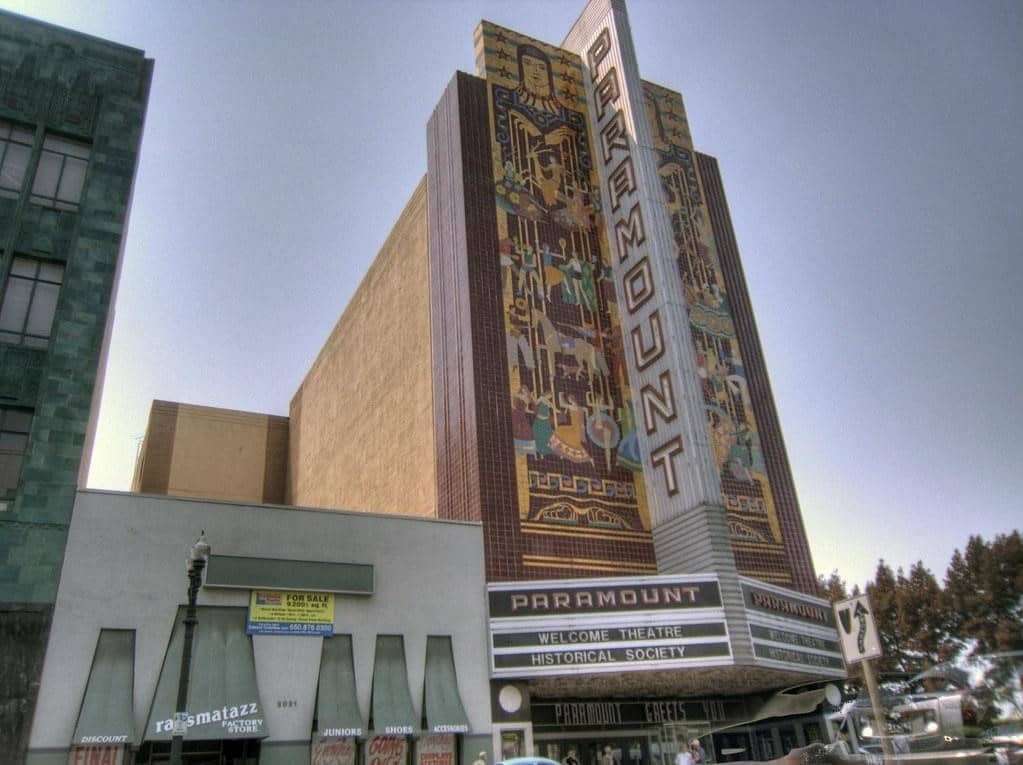
Oakland Weather
Like nearby San Francisco, people living in Oakland enjoy a mild climate throughout the year. The average temperature here ranges from the mid-40s to mid-70s, and on most days here feel comfortably cool. The rainy season in Oakland lasts from November to March, so if you’re moving during the Fall or Winter, keep an eye on the forecast, and always be prepared in case of a storm.
City Restrictions in Oakland
Like most cities, navigating Oakland can be difficult, especially if you’re new to the area. The downtown is especially prone to heavy traffic, and the city also has many one-way streets, so make sure to check the signs before you turn! Other important tips for driving and parking in Oakland include:
- Colored Curbs: Street parking in Oakland is color-coded to help drivers know where they can park, when they can park there, and how long they can stay!
- A Red curb means no parking, or even stopping is allowed.
- Yellow curbs are only for picking up or dropping off passengers, and you have to move your car within 3 minutes or stopping. You can also drop passengers off at White curbs, but there is no specific time limit. Yellow and White curb rules are usually in effect from 7 am-6 pm.
- At a Green curb, you can park or stand for just 12 minutes between the hours of 8 am and 6 pm. Green curb restrictions do not apply during Sundays and Holidays.
- Blue curbs are reserved for people with disabilities, and cars with valid handicapped placards or license plates.
- Metered Parking: In Oakland, metered parking spots are FREE during the weekend! During weekdays, metered parking in the city costs $2.00 per hour on average.
- The Flatlands and the Hills: Oakland’s topography is split in two. About two-thirds of the city lies on a flat plain along the bay, while the outer third is located in the foothills to the East. Be prepared for sudden changes in terrain, and learn to curb your wheels if you’re moving to the Hills.
Apartment Requirements in Oakland
Whether you’re moving into a privately-owned building or luxury high-rise, most apartment buildings have certain moving day rules for their residents. Every apartment is different, but you should ask your landlord or property manager about these things:
- Elevators: Buildings with elevators often block out certain times they can be used for moving purposes. This means you’ll need to contact your building and reserve a time in advance. If your building does not have an elevator, take note of the available space so you can assess what furniture will make it up to your unit.
- Loading Dock: Larger buildings usually have a street-level back entrance with a wide, accessible doorway and sometimes a service elevator. If your building does have a loading dock, chances are residents are required to move in there.
- Designated Doors: Instead of a loading dock, some buildings prefer to have residents use a more discrete entrance to avoid heavy traffic in the front door and lobby.
Neighborhood Limitations in Oakland
Even if you’re not in the hustle and bustle of downtown Chicago, you still may run into issues with a single-family home. Check ahead of time to see if your neighborhood has any of these limitations:
- HOA Rules: Some homeowner associations (HOA) have rules regarding what can and can’t happen in the neighborhood like tampering with landscaping, blocking certain areas, and other inconveniences that could happen while moving.
- Noise: Whether or not it’s officially enforced through an HOA, it’s always good to be mindful of your noise level if you will be moving in early in the morning or late in the evening.
- Blocking Driveways: This is something city, and suburban dwellers always agree on: never block a driveway.
Busy Moving Times in Oakland
- First Fridays: On the first Friday of each month, Oakland locals come out to celebrate local artists and performers (and eat some amazing food). The monthly event draws large crowds to Telegraph Avenue, leading to an increase in traffic and making it difficult to find parking.
- Oakland Triathlon Festival: The Oakland triathlon is the largest race of its kind in the west coast. The event website offers plenty of information on traffic changes, such as the times when cyclists will be on the road and closures drivers need to be aware of.
- The Día de Los Muertos Festival: One of many cultural festivals in Oakland, the Day of the Dead is celebrated in Oakland’s Fruitvale neighborhood, and brings more than 100,000 people to the area. If you are moving to the Fruitvale neighborhood around November 1st, make sure to plan your route around the festival to avoid driving and parking issues.
- Other Cultural Festivals and Local Events: No matter what time of year you’re moving to Oakland, be sure to check online to see if any local events are happening that may impede your moving day activities.
Orlando
Orlando may be the Theme Park Capital of The World and home to the “Happiest Place on Earth,” but it’s also one of the fastest growing cities in America. With gorgeous homes, sunny weather, and job opportunities in everything from finance to technology, Orlando is a perfect choice for any family or young professional looking for a new hometown.
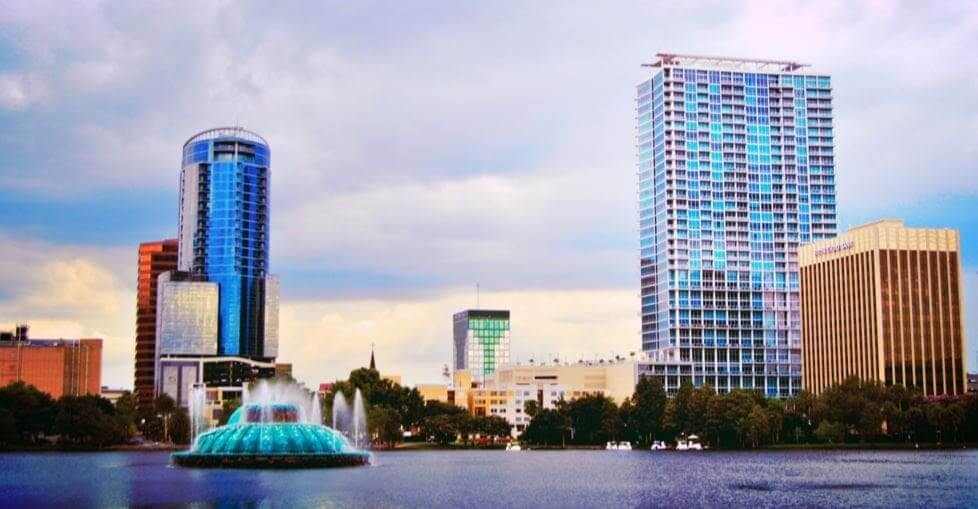
Orlando Weather
Orlando is at the center of the Sunshine State, and therefore most known for its many sunny, hot days throughout the year. However, since Florida is a peninsula, the weather here is more unpredictable than other parts of the country. Rain and thunderstorms occur often and can result in low visibility and slick roads that drivers must navigate carefully. Additionally, though central Florida is more shielded than more coastal areas, Orlando is still impacted by hurricane season, which can bring torrential downpours and heavy winds. Check weather reports as your moving day approaches, and always drive with caution when in Orlando.
City Restrictions in Orlando
Driving in Orlando for the first time can be confusing, especially if you’re flying in and driving a rented vehicle! Popular tourist routes are often full of traffic, and it’s important to keep in mind that many people on the roads here may also be in rentals, and might even be from other countries. Therefore the cars around you might not be as familiar with American best practices for driving as you are. Here are a few additional points to keep in mind when driving in and around Orlando.
- Right on Red: YES, you can turn right on red in most intersections in Orlando, after coming to a full stop, and checking the cross-traffic. Intersections where turning right on red isn’t permitted will have a clear sign!
- Parking: In Orlando, you should always park facing the same direction as the flow of traffic. Otherwise, you may be subject to a fine! Street parking in Orlando is metered, but free from 6PM-8AM Monday-Saturday, all day Sunday and during city holidays!
- Disney World & Universal Studios: Freeways near these theme parks and the routes connecting them to the airport are more congested than other Orlando roads. If your moving road coincides with theme park traffic, add at least 30 minutes to your expected driving time!
Apartment Requirements in Orlando
Whether you’re moving into a privately-owned building or luxury high-rise, most apartment buildings have certain moving day rules for their residents. Every apartment is different, but you should ask your landlord or property manager about these things:
- Elevators: Buildings with elevators often block out certain times they can be used for moving purposes. This means you’ll need to contact your building and reserve a time in advance. If your building does not have an elevator, take note of the available space so you can assess what furniture will make it up to your unit.
- Loading Dock: Larger buildings usually have a street-level back entrance with a wide, accessible doorway and sometimes a service elevator. If your building does have a loading dock, chances are residents are required to move in there.
- Designated Doors: Instead of a loading dock, some buildings prefer to have residents use a more discrete entrance to avoid heavy traffic in the front door and lobby.
Neighborhood Limitations in Orlando
Even if you’re not in the hustle and bustle of downtown Chicago, you still may run into issues with a single-family home. Check ahead of time to see if your neighborhood has any of these limitations:
- HOA Rules: Some homeowner associations (HOA) have rules regarding what can and can’t happen in the neighborhood like tampering with landscaping, blocking certain areas, and other inconveniences that could happen while moving.
- Noise: Whether or not it’s officially enforced through an HOA, it’s always good to be mindful of your noise level if you will be moving in early in the morning or late in the evening.
- Blocking Driveways: This is something city, and suburban dwellers always agree on: never block a driveway.
Busy Moving Times in Orlando
- Citrus Bowl: This yearly Florida sports event brings in top college football teams from across the country to play one another on New Year’s Day. In addition to the teams themselves, thousands of sports fans come into the city to watch their favorite players in one of America’s oldest college bowl game. Expect increased traffic before and after the game in the areas near Orlando’s Camping World Stadium.
- Halloween Horror Nights: A yearly event hosted by Universal Studios Orlando, this event transforms the popular theme park into a house of horrors from September to the first weekend of November each year. Features include haunted houses, “scare zones” and live entertainment.’If you are moving to an area close to Universal, watch out for increased congestion, and lots of folks in costume!
- Florida Film Festival: The largest film festival in the Sunshine State, this festival usually takes place over 1-2 weeks in mid-April at the Enzian Theater in downtown Orlando. During the festival, you may run into traffic, or be rerouted due to road closures. Parking may also be difficult with an extra 23,000 guests in the city.
- MegaCon: This is the largest Comic and multimedia convention in Florida. Every May, more than 100,000 fans of pop culture descend on the Orange County Convention Center for four days of panels, performances, autograph sessions, and workshops. Traffic near the Convention Center will be slow-moving during the convention, and finding street parking may be near impossible, so look for paid garages if you’re moving in during the convention.
- Other Festivals & Events: Orlando has local festivals going on year round, and Universal Studios and Disney World have both annual events and special events, like the opening of new rides or theme park areas (like Harry Potter World or the upcoming Star Wars expansion at Disney), which bring in massive influxes of tourists.
Philadelphia
Are you considering moving to the birthplace of America? Philadelphia is a fantastic choice for anyone seeking a new hometown, whether you’re a millennial looking for the hippest Philly neighborhoods, a couple looking for the perfect place to start a family, or a history buff who wants to live in the center of the American story. Before you arrive, be sure to check out these tips to make your moving day stress-free.
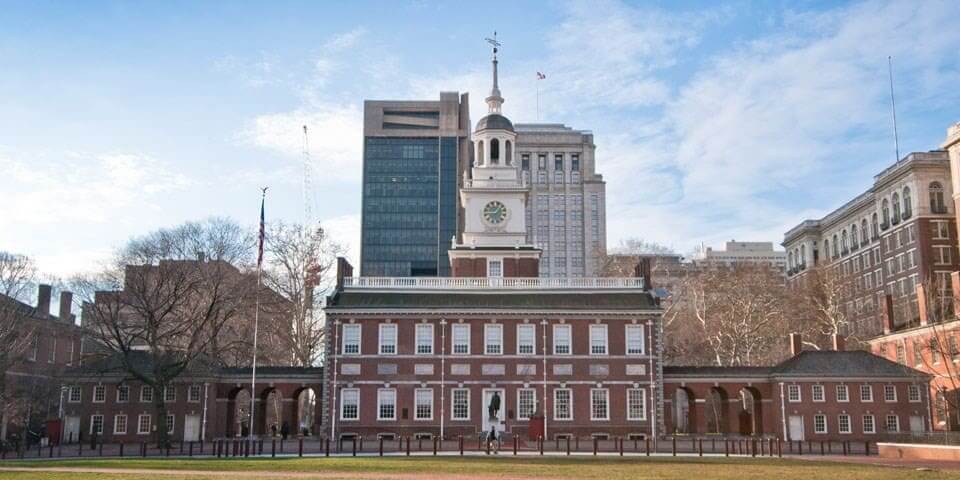
Philadelphia Weather
All four seasons make their way through Philadelphia, bringing with them a range of weather types and temperatures. In the depths of Winter, the temperature in Philadelphia can drop as low as 13 degrees, while Summer days can reach into the 90s. While Philadelphia Winters are mild when it comes to snow, the city does see a few storms, and also gets about 47 inches of rainfall throughout the year. Before your moving day, make sure to check the weather forecast, and plan accordingly for a safe and seamless moving experience.
City Restrictions in Philadelphia
Driving in any new city is a challenge, and Philadelphia is no different. To help make your driving and parking experience easy, here are a few helpful tips for handling the roads in Philly.
- On-Street Parking: Parking on the street in Philadelphia is permitted, but usually has a time limit of one or two hours. Like many other cities, Philly offers a downloadable app called meterUP to make it easy to pay for your street parking.
- One Way Streets: Most streets in Philadelphia are one-way, with a few exceptions like Broad Street and Vine Street. The city has a grid layout to make it easier to navigate, but you’ll still want to take your time and pay close attention to signs to avoid turning the wrong way.
- Watch Out for Cyclists: Roadshare rules apply in Philadelphia, and PA has specific laws to ensure cyclists stay safe on the streets. If you find yourself behind a bike, make sure you’re driving at least 4 feet back, until you can legally and safely pass them.
Apartment Requirements in Philadelphia
Whether you’re moving into a privately-owned building or luxury high-rise, most apartment buildings have certain moving day rules for their residents. Every apartment is different, but you should ask your landlord or property manager about these things:
- Elevators: Buildings with elevators often block out certain times they can be used for moving purposes. This means you’ll need to contact your building and reserve a time in advance. If your building does not have an elevator, take note of the available space so you can assess what furniture will make it up to your unit.
- Loading Dock: Larger buildings usually have a street-level back entrance with a wide, accessible doorway and sometimes a service elevator. If your building does have a loading dock, chances are residents are required to move in there.
- Designated Doors: Instead of a loading dock, some buildings prefer to have residents use a more discrete entrance to avoid heavy traffic in the front door and lobby.
Neighborhood Limitations in Philadelphia
Even if you’re not in the hustle and bustle of downtown Philadelphia, you still may run into issues with a single-family home. Check ahead of time to see if your neighborhood has any of these limitations:
- HOA Rules: Some homeowner associations (HOA) have rules regarding what can and can’t happen in the neighborhood like tampering with landscaping, blocking certain areas, and other inconveniences that could happen while moving.
- Parking Permits: Parking on neighborhood streets is reserved for locals with street parking permits. All others can park on Philly neighborhood streets for up to 2 hours only!
- Noise: Whether or not the HOA enforces noise limits, it’s always good to be mindful of your noise level if you will be moving in early in the morning or late in the evening.
- Blocking Driveways: This is something city, and suburban dwellers always agree on: never block a driveway.
Busy Moving Times in Philadelphia
- Philadelphia Mummers Parade: Each New Years Day, more than 10,000 costumed parade participates walk down the streets of Philadelphia, while thousands more cheer them on during the annual Mummers Parade. Check the parade route ahead of time, so you don’t get turned around by detours!
- Broad Street Run: More than 40,000 runners and their fans descend upon Philadelphia each May for a 10-mile run through the city. As you may have guessed from the name, the course will close off Broad Street from West Fisher Avenue to Farragut Avenue.
- Head of the Schuylkill Regatta: One of the largest regattas in the world, the Head of the Schuylkill Regatta takes place at the end of October, and involves more than 7,000 athletes, and thousands of more visitors from all over the world. Roads near the Schuylkill River will be packed with spectators during the regatta, so we recommend avoiding the area during your move.
- Other Local Events: Philly is a city that knows how to party, and with 104.9 million residents even lesser known local festivals and events can shut down streets and result in increased traffic and limited parking. To see what events are going on during your move, check out the events page at VisitPhilly.com.
San Antonio
Moving to San Antonio is perfect if you’re looking for an energetic city with gorgeous surroundings, a growing job market and a low cost of living. In addition to being a top destination for millennials, San Antonio is also a perfect place to start your family, with excellent schools and plenty to do around town. If you’re planning your San Antonio moving day, we hope these tips will help ensure a stress-free transition.
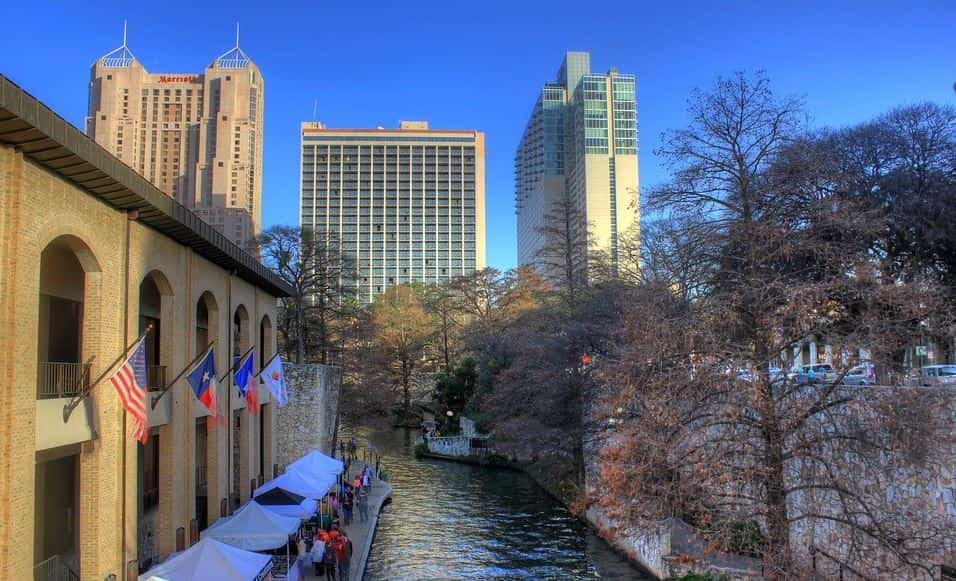
San Antonio Weather
Living in San Antonio is perfect for you if you hate the snow and love the sunshine. San Antonio gets 220 sunny days per year, zero snow and less rainfall than the American average, making the climate here one of the most desirable in the nation. However, if you’re moving to San Antonio during the summer, be sure to protect your skin with sunblock, and stay hydrated, because the temperature in the city frequently reaches into the 90s during this time.
San Antonio is also vulnerable to hurricanes approaching through the Gulf of Mexico. From June to November, these powerful Atlantic storms bring torrential rain, flash floods, massive power outages and high-speed winds to many areas of Texas, including San Antonio. Never try to travel through a hurricane, even if it means you have to adjust your moving plans.
City Restrictions in San Antonio
San Antonio is one of the largest cities in America, which means getting around downtown can be confusing, especially if you’re new to the area. For a safe and ticket-free moving day, follow these tips for parking and driving in San Antonio.
- Downtown Parking: Parking in San Antonio is easier than you might think; in addition to numerous garages throughout the city, the city offers metered street parking for both locals and visitors. The parking pay stations here accept cash, credit, and debit cards, making it easy to pay for your spot.
- Move Over/Slow Down: In San Antonio and most of Texas, the law requires you to move over when legally and safely possible if passing a police car or emergency vehicle that’s pulled to the side of the road.
- Frontage Roads: Also known as service roads, these roads run alongside highways and act as an intermediary for folks going to and from the city. Because they are largely one-way roads, you’ll have to get used to using the U-Turn lane while in San Antonio.
- Loops: Several roads in San Antonio wind their way around the whole city in a wagon-wheel shape, making an actual loop through downtown. The loops are directional, so be sure to check the signs and listen to your GPS to avoid going the wrong way!
Apartment Requirements in San Antonio
Whether you’re moving into a privately-owned building or luxury high-rise, most apartment buildings have certain moving day rules for their residents. Every apartment is different, but you should ask your landlord or property manager about these things:
- Elevators: Buildings with elevators often block out certain times they can be used for moving purposes. This means you’ll need to contact your building and reserve a time in advance. If your building does not have an elevator, take note of the available space so you can assess what furniture will make it up to your unit.
- Loading Dock: Larger buildings usually have a street-level back entrance with a wide, accessible doorway and sometimes a service elevator. If your building does have a loading dock, chances are residents are required to move in there.
- Designated Doors: Instead of a loading dock, some buildings prefer to have residents use a more discrete entrance to avoid heavy traffic in the front door and lobby.
Neighborhood Limitations in San Antonio
Even if you’re not in the hustle and bustle of downtown San Antonio, you still may run into issues with a single-family home. Check ahead of time to see if your neighborhood has any of these limitations:
- HOA Rules: Some homeowner associations (HOA) have rules regarding what can and can’t happen in the neighborhood like tampering with landscaping, blocking certain areas, and other inconveniences that could happen while moving.
- Noise: Whether or not the HOA enforces noise limits, it’s always good to be mindful of your noise level if you will be moving in early in the morning or late in the evening.
- Blocking Driveways: This is something city, and suburban dwellers always agree on: never block a driveway.
Busy Moving Times in San Antonio
- Fiesta San Antonio: An annual festival celebrating San Antonio’s history, this April event is the largest festival in San Antonio. More than 3 million people take part, and the festival includes more than 100 different events throughout the city. Expect detours, congested roadways and severely limited parking during Fiesta San Antonio.
- Run the Alamo: San Antonio’s annual marathon and half marathon takes place each year during March. In addition to the marathon itself, Run the Alamo also includes a river parade and a running expo! If you’re moving during race weekend, check the course map and city information for road closures and detours.
- San Antonio Stock Show & Rodeo: More than 2 million people flock to San Antonio each February for one of the world’s largest stock shows and rodeos. The show takes place over three weeks and includes hundreds of events and attractions. Although the event itself takes place at the fairgrounds outside the downtown area, the influx of tourists will produce more traffic and less parking availability.
- Dia De Los Muertos: Usually occurring the weekend before Halloween, San Antonio’s Dia De Los Muertos celebration is one of the biggest events in the city. Visitors come from all over to see incredible artisan craftwork, listen to live music, and participate in events like the altar building contest! Watch out for large crowds during Dia De Los Muertos, especially near the La Villita Historic Arts Village in Downtown.
San Diego
Are you considering moving to San Diego? Congrats! This city is a fantastic choice, whether you’re looking for incredible millennial neighborhoods, a job at one of the nations best tech companies, or want to escape snow and rain for more than 200 sunny days a year. Before you arrive, check out the tips below so you can plan the perfect, worry-free moving day.
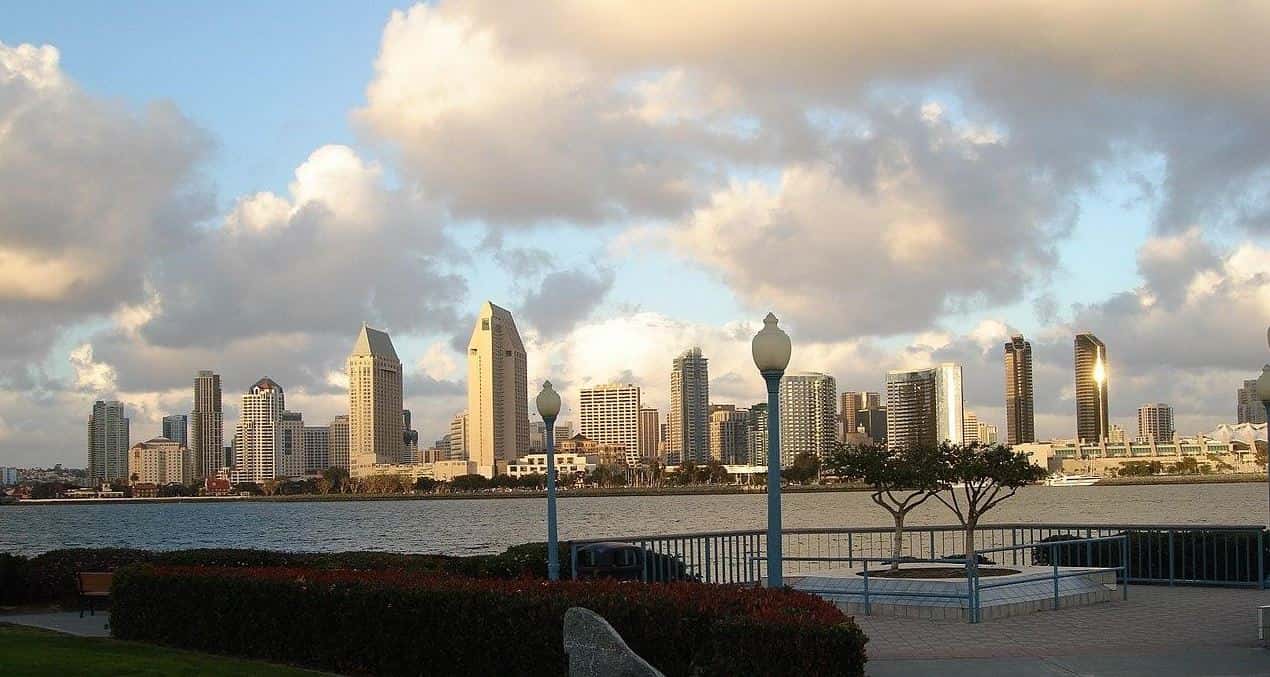
San Diego Weather
Generally speaking the weather in San Diego is warm and the sun is out. The city gets a total of 266 sunny days throughout the year, and enjoys temperatures above 45 degrees all year long. Being so close to the coast, San Diego is impacted by weather in the Pacific, much in the same way the Atlantic influences the NorthEast. In the Pacific Ocean, a condition referred to as “El Nino” can result in increased rainfall and a higher frequency of thunderstorms in the city during the Fall and Winter. Make sure to check the weather forecast before your moving day, and make a plan b in case a storm prevents you from hitting the road. Educate yourself on how to prepare for El Nino, take a look at this Fact Sheet from ReadySanDiego.org.
City Restrictions in San Diego
If you’re driving around San Diego for the first time and get lost, don’t worry: you aren’t alone. Getting around San Diego can be confusing, and figuring out where you can legally park is also a hassle. To help, here are some insider tips on driving and parking in San Diego:
- San Diego Parking: While there is street parking in San Diego, parking rules are strictly enforced here. Keep these points in mind when parking in San Diego.
- When parked on a hill, be sure to curb your wheels to avoid a ticket.
- You aren’t allowed to park in on a public street for more than 72 hours.
- You can pay for your parking with cash or credit, or use the ParkMobile app on your smartphone.
- Read signs carefully, especially those about street sweeping and alternate-day parking!
- San Diego Freeways: Most highways around the city have 4 lanes. Lane 1 is the furthest lane to the left and is reserved for passing and fast drivers. If you’re new to the area, stick to lane 3, which is a good spot for slower vehicles, but keeps you away from the slow trucks and trailers in lane 4.
- Keep an Eye on Other Drivers: San Diego is one of the top tourist destinations in America, which means many of the drivers on the road are unfamiliar with the area and might be driving a rental car they’re not used to yet. Be extra vigilant of drivers who might switch lanes, stop or take turns without warning.
Apartment Requirements in San Diego
Whether you’re moving into a privately-owned building or luxury high-rise, most apartment buildings have certain moving day rules for their residents. Every apartment is different, but you should ask your landlord or property manager about these things:
- Elevators: Buildings with elevators often block out certain times they can be used for moving purposes. This means you’ll need to contact your building and reserve a time in advance. If your building does not have an elevator, take note of the available space so you can assess what furniture will make it up to your unit.
- Loading Dock: Larger buildings usually have a street-level back entrance with a wide, accessible doorway and sometimes a service elevator. If your building does have a loading dock, chances are residents are required to move in there.
- Designated Doors: Instead of a loading dock, some buildings prefer to have residents use a more discrete entrance to avoid heavy traffic in the front door and lobby.
Neighborhood Limitations in San Diego
Even if you’re not in the hustle and bustle of downtown San Diego, you still may run into issues with a single-family home. Check ahead of time to see if your neighborhood has any of these limitations:
- HOA Rules: Some homeowner associations (HOA) have rules regarding what can and can’t happen in the neighborhood like tampering with landscaping, blocking certain areas, and other inconveniences that could happen while moving.
- Noise: Whether or not the HOA enforces noise limits, it’s always good to be mindful of your noise level if you will be moving in early in the morning or late in the evening.
- Blocking Driveways: This is something city, and suburban dwellers always agree on: never block a driveway.
Busy Moving Times in San Diego
- San Diego PRIDE: The LGBTQI community in San Diego is loud and proud, so it’s no wonder that the PRIDE festival in San Diego is one of the largest in America. More than 300,000 people come together during PRIDE to participate in a range of events, including rallies, a 5K race, live performances, and of course, a PRIDE Parade. Check the website for information on events, as well as road closures in the city.
- Comic-Con International: The San Diego Comic-Con is not just one of the most well-attended multi-genre media fests in the country, but one of the most popular ones in the world. Every April, hundreds of thousands of fans flock to San Diego to attend the convention at the Anaheim Convention Center. Be on the look-out for cosplaying pedestrians as you drive through the city.
- San Diego Half Marathon: If you’re moving to San Diego in mid-March, you need to be aware of road closures, increased traffic and detours during the San Diego Half Marathon. The course runs from 5th Ave/Harbor Drive, along the coast and back around to Petco Park.
- More San Diego Events and Festivals: The events mentioned above are just a few of the hundreds of local cultural festivals and experiences that take place in San Diego throughout the year. Make sure your moving day runs smoothly by checking online for events in your area and planning accordingly.
San Francisco
San Francisco is home to almost 900,000 people and is known for its incredible weather, job opportunities in tech and aerospace, and hilly landscape. The city is a top destination for millennials, with some of the trendiest neighborhoods on the West Coast, and has tons of things to do, whether you’re a tourist or a local. If you’re planning a move to San Francisco, take note of these tips to make your transition as easy as possible.
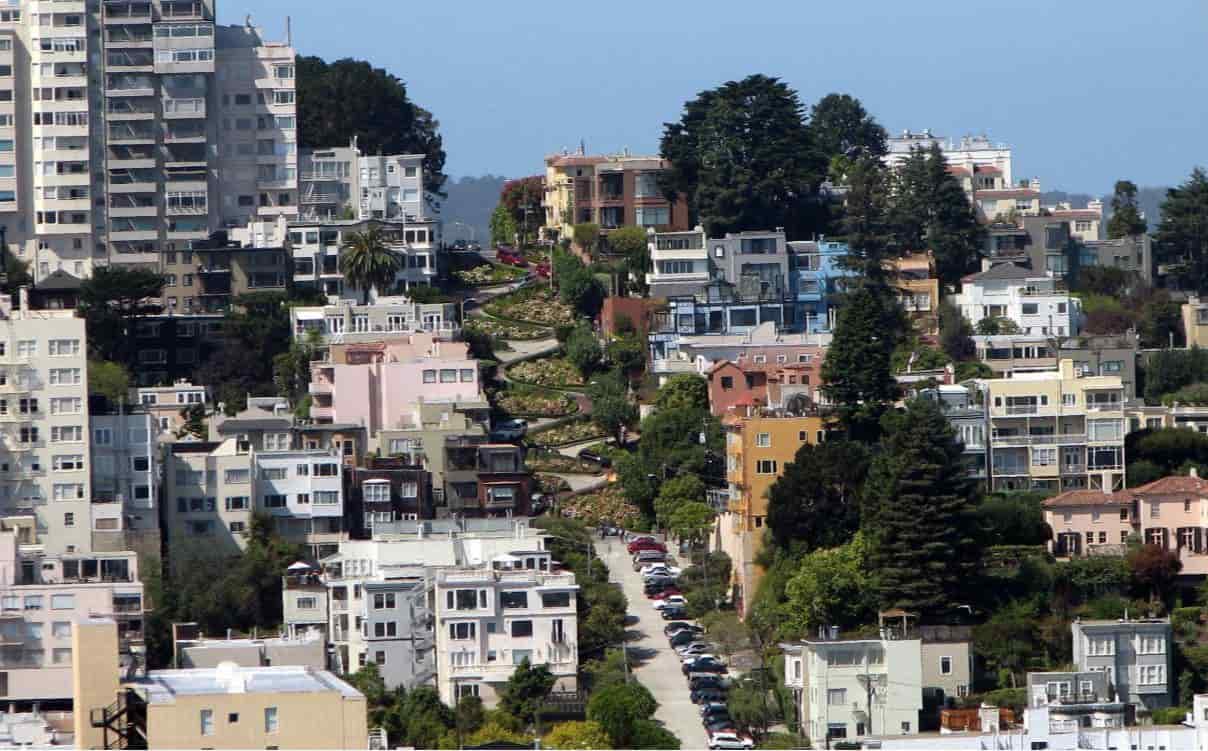
San Francisco Weather
The weather in San Francisco is enviable. With an average temperature of 57 degrees, you won’t find too many sweltering hot days here, and it never gets below freezing. The Bay Area rarely gets snow and has just 68 rainy days per year. When moving here, remember to wear layers, since some areas of the city get windy, and the temperature can fluctuate throughout the day.
City Restrictions in San Francisco
Ever heard of the 7 Hills of San Francisco? If you’re moving to the area, you’ll be familiar with them soon. The city is home to some seriously steep roads, and if driving at an angle wasn’t tough enough, many of the roads feature twists and turns to compensate. Lombard Street, between Hyde and Jones Streets, is famously called the “Crookedest Street in the World.” We recommend avoiding this street in your moving route; not only does it usually have traffic, but pedestrian tourists come from all around to take their picture on the hill. Other San Francisco moving obstacles include:
- One-Way Streets: San Francisco has a lot of them, and getting turned down the wrong street can make it difficult to find your way back to your route. Look at street signs carefully, and turn up the volume on your GPS to minimize delays.
- Curb Your Wheels: When parking on one of the city’s many hills, you’re required by law to curb your wheels. What does that mean? When you park, you’ll need to turn your front wheels, so they are angled towards the curb– this helps prevent your car from moving on its own.
- Watch for Light Rail Vehicles (LRVs): San Francisco’s main public transit system, the SFMTA runs using LRVs. According to local laws, you may not pass an LRV on its left at any time, and you may not pass it on the right when the doors are open.
Apartment Requirements in San Francisco
Whether you’re moving into a privately-owned building or luxury high-rise, most apartment buildings have certain moving day rules for their residents. Every apartment is different, but you should ask your landlord or property manager about these things:
- Elevators: Buildings with elevators often block out certain times they can be used for moving purposes. This means you’ll need to contact your building and reserve a time in advance. If your building does not have an elevator, take note of the available space so you can assess what furniture will make it up to your unit.
- Loading Dock: Larger buildings usually have a street-level back entrance with a wide, accessible doorway and sometimes a service elevator. If your building does have a loading dock, chances are residents are required to move in there.
- Designated Doors: Instead of a loading dock, some buildings prefer to have residents use a more discrete entrance to avoid heavy traffic in the front door and lobby.
Neighborhood Limitations in San Francisco
Even if you’re not in the hustle and bustle of downtown Chicago, you still may run into issues with a single-family home. Check ahead of time to see if your neighborhood has any of these limitations:
- HOA Rules: Some homeowner associations (HOA) have rules regarding what can and can’t happen in the neighborhood like tampering with landscaping, blocking certain areas, and other inconveniences that could happen while moving.
- Noise: Whether or not it’s officially enforced through an HOA, it’s always good to be mindful of your noise level if you will be moving in early in the morning or late in the evening.
- Blocking Driveways: This is something city, and suburban dwellers always agree on: never block a driveway.
Busy Moving Times in San Francisco
- The San Francisco Pride Parade: One of the largest pride celebrations in the world, the San Francisco Pride Parade brings in more than 100,000 visitors every year. The parade course runs straight down Market Street, from Embercado to the Civic Center/UN Plaza. Check your moving route for additional road closures, and watch out for pedestrians!
- The Biofreeze San Francisco Marathon: In addition to being a qualifier for the renowned Boston Marathon, the San Francisco Marathon is an incredible race in its own right. Taking place each July, the race includes more than 27,000 runners and 80,000 sidelines, spectators. The marathon course starts along the shoreline, cuts across the Golden Gate Bridge (both ways), and circles through the city back to the shore for a scenic finish. If you’re moving to the area during the Marathon, expect road closures, increased traffic and lots of crowds.
- New Year’s Eve in San Francisco: Each year on New Year’s Eve, the City of San Francisco puts on a show with celebratory fireworks in the Bay. Though the fireworks only last 20 minutes or so, other NYE events take place all around the city, from street fairs to live performances and even cruises through the bay. While we’d recommend not moving in during a major holiday anyways, NYE movers should be cautious, plan their route in advance, and prepare for delays.
- San Francisco Concerts: San Francisco is home to several amazing music venues, including The Fillmore, the Davies Symphony Hall, and the Great American Music Hall. Throughout the year, these play host to top musicians, bringing in crowds of thousands at a time. Check sites like Eventbrite and TripAdvisor to see which concerts coincide with your move, and plan your route accordingly!
- Other Local Events: We’ve only covered a few of the hundreds of local events that go on in San Francisco all year round. Before your move, make sure to check online to see what’s going on in the city, and in your neighborhood, so you don’t get caught off guard!
San Jose
San Jose is one of the most populous cities in America and continues to grow each year, as everyone from millennials to established professionals moves to the area. As part of the famous Silicon Valley, San Jose is home to several tech startups, as well as industry leaders like Cisco Systems and Adobe, Inc. Plus, the city has some of the best weather in the USA, has low crime rates compared to other large cities and has dozens of incredible neighborhoods to choose from. Are you planning a move to San Jose? Check out these tips to make your moving day less stressful.
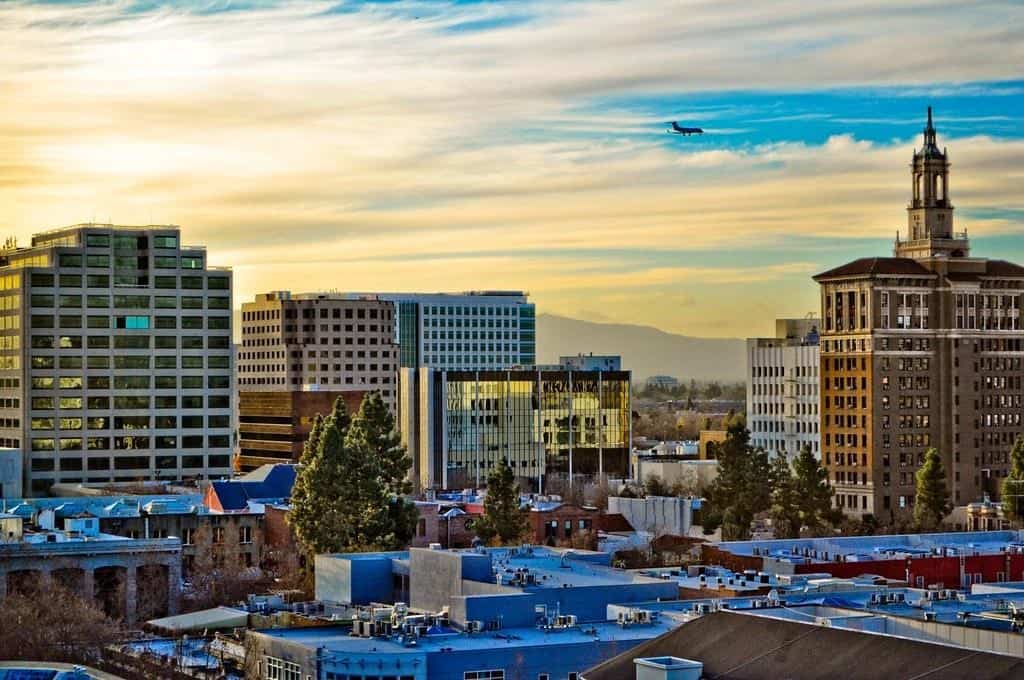
San Jose Weather
Like most of the Bay Area, San Jose benefits from lots of 300 sunny days per year and a mild climate that will finally allow you to throw out your heavy winter coat for good. The temperature here rarely drops below the 40s; however, Summer days can become sweltering at 80-85 degrees. In San Jose, downtown areas tend to be a few degrees hotter than the suburbs, so if you’re moving during July or August, remember to protect your skin, stay hydrated, and take advantage of cooler mornings and evenings for unloading.
City Restrictions in San Jose
the first time. Make sure to keep your GPS on at all times and choose a local moving company who knows the area can help guide you through potential obstacles. You’ll also want to leave extra time for downtown traffic, especially during morning and evening rush hours. Here are a few more things to keep in mind about San Jose.
- Carpool Lanes: Highways around San Jose often have High Occupancy Vehicle (HOV) lanes to help reduce traffic. If you have 2 or more people in your car, take advantage of HOV lanes to bypass the worst slowdowns. NEVER use a carpool lane when driving alone; if you get caught, you’ll pay a hefty fine.
- Street Cleaning & Other Parking Restrictions: Street parking is available in San Jose, but you should check parking signs, even when you see a meter. Some metered parking is closed certain days for street sweeping, and some might only allow parking during certain hours of the day. Additionally, some streets may have “alternate day” parking rules that you’ll need to learn quickly to avoid getting a ticket.
- Validate Your Parking: Since parking downtown can be difficult and expensive, many local businesses will validate parking as a service for customers. On weekdays, parking validation will give you 2 hours of free parking; on weekends you’ll get free parking with no hourly limit.
- Local Traffic Laws: Pay attention to local speed limits when driving in San Jose, as well as posted signs. If you have any drivers under 18, be aware that they are not allowed to use a phone while driving, even if the device is hands-free.
Apartment Requirements in San Jose
Whether you’re moving into a privately-owned building or luxury high-rise, most apartment buildings have certain moving day rules for their residents. Every apartment is different, but you should ask your landlord or property manager about these things:
- Elevators: Buildings with elevators often block out certain times they can be used for moving purposes. This means you’ll need to contact your building and reserve a time in advance. If your building does not have an elevator, take note of the available space so you can assess what furniture will make it up to your unit.
- Loading Dock: Larger buildings usually have a street-level back entrance with a wide, accessible doorway and sometimes a service elevator. If your building does have a loading dock, chances are residents are required to move in there.
- Designated Doors: Instead of a loading dock, some buildings prefer to have residents use a more discrete entrance to avoid heavy traffic in the front door and lobby.
Neighborhood Limitations in San Jose
Even if you’re not in the hustle and bustle of downtown Chicago, you still may run into issues with a single-family home. Check ahead of time to see if your neighborhood has any of these limitations:
- HOA Rules: Some homeowner associations (HOA) have rules regarding what can and can’t happen in the neighborhood like tampering with landscaping, blocking certain areas, and other inconveniences that could happen while moving.
- Noise: Whether or not it’s officially enforced through an HOA, it’s always good to be mindful of your noise level if you will be moving in early in the morning or late in the evening.
- Blocking Driveways: This is something city, and suburban dwellers always agree on: never block a driveway.
Busy Moving Times in San Jose
- Rock ‘n’ Roll San Jose Half Marathon: Occurring each year in October, the San Jose Half Marathon also includes a 5K and a 10K, with thousands of runners competing in each race. Be extra cautious of pedestrians near the race area, and be sure to check the Road Closures page of the event website when planning your moving day route.
- SubZERO Festival: In addition to monthly First Friday events for art lovers, the SoFa District in San Jose also hosts the SubZERO festival each June. Tourists and locals alike will flood into the district for two evenings of live music, great food, and stunning artwork. Expect some road closures and increased downtown traffic during the festival.
- Silicon Valley Pride Festival: Unlike other Pride celebrations, San Jose’s major event for the LGBTQ+ community takes place in August, rather than June. The event includes a parade and two-day festival with live performances, food and artisan vendors and more. This is the largest Pride event in the South Bay, so you should prepare in advance for congested roadways and minimal parking options.
- Other Local Events: San Jose and the surrounding Bay Area always have something going on, from local cultural festivals to headlining rock concerts. Before your moving day, check on Google to see what events are happening around your new home, and plan your move to avoid closed roads and as much traffic as possible.
Tampa
Are you thinking about moving to Tampa? Whether you’re a millennial looking for an active city with a thriving nightlife and trendy neighborhoods, or seasoned professional seeking work in industries like Avionics, Finance or Manufacturing, this city has something to offer everyone. To make your moving day a breeze, check out these tips for navigating your move to Tampa.
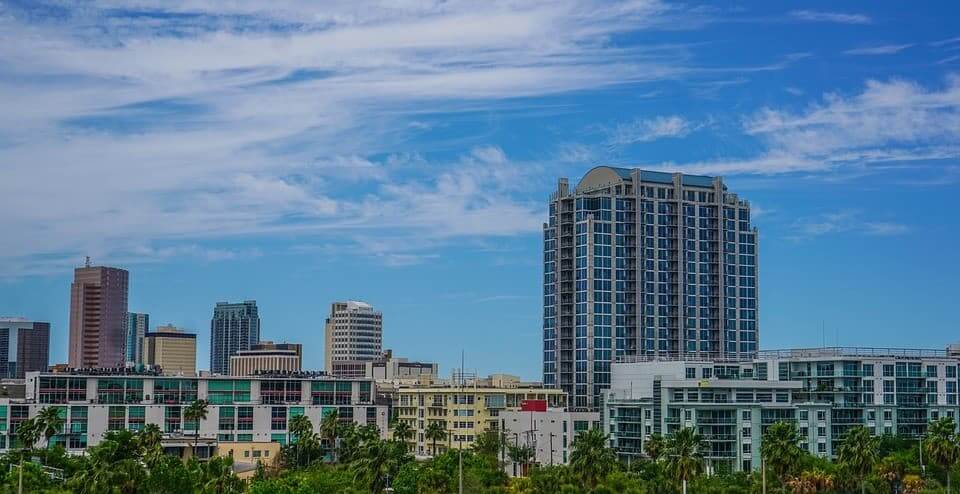
Tampa Weather
Generally, Tampa enjoys wonderful, warm weather throughout the year. The average temperature in the city ranges from 52-90 degrees, and the city enjoys 246 days of sun every year. You won’t have to worry about snow if you live in Tampa, so if you’re moving here from up North, feel free to leave the snow shovel behind.
Hurricane season in Florida runs from the beginning of June to the End of November. During these months, powerful storms build up in the Atlantic and make their way towards the bay, and the coastline beyond, bringing with them torrential rain, flash floods, and dangerous high-speed winds. If you are moving during hurricane season, keep a close eye on the weather forecast, and listen to local authorities regarding any evacuation or state of emergency orders. Never drive or unload your moving truck during an active hurricane storm.
City Restrictions in Tampa
Like many large cities, Tampa suffers from plenty of rush hour traffic, as well as visiting drivers who may cause confusion as they try to navigate the roads. Here are a few tips to help you drive and park safely in Tampa.:
- Use Your GPS: If you aren’t familiar with the city, it is easy to get lost. Technology has given us an easy way to stay on track, so use it!
- Right Turn Only: In Tampa, many right lanes become “turn only” lanes with very little warning. Keep an eye out and stick to the middle or left lane to avoid being forced to turn off your preferred route.
- On Street Parking: There are more than 1,600 metered parking spaces in Downtown Tampa, but in a city of 385,000, every spot is highly coveted. Enforced meter parking times vary from neighborhood to neighborhood, so be sure to check the Tampa Downtown Partnership to see when you’ll have to pay in your area.
Apartment Requirements in Tampa
Whether you’re moving into a privately-owned building or luxury high-rise, most apartment buildings have certain moving day rules for their residents. Every apartment is different, but you should ask your landlord or property manager about these things:
- Elevators: Buildings with elevators often block out certain times they can be used for moving purposes. This means you’ll need to contact your building and reserve a time in advance. If your building does not have an elevator, take note of the available space so you can assess what furniture will make it up to your unit.
- Loading Dock: Larger buildings usually have a street-level back entrance with a wide, accessible doorway and sometimes a service elevator. If your building does have a loading dock, chances are residents are required to move in there.
- Designated Doors: Instead of a loading dock, some buildings prefer to have residents use a more discrete entrance to avoid heavy traffic in the front door and lobby.
Neighborhood Limitations in Tampa
Even if you’re not in the hustle and bustle of downtown Tampa, you still may run into issues with a single-family home. Check ahead of time to see if your neighborhood has any of these limitations:
- HOA Rules: Some homeowner associations (HOA) have rules regarding what can and can’t happen in the neighborhood like tampering with landscaping, blocking certain areas, and other inconveniences that could happen while moving.
- Noise: Whether or not the HOA enforces noise limits, it’s always good to be mindful of your noise level if you will be moving in early in the morning or late in the evening.
- Blocking Driveways: This is something city, and suburban dwellers always agree on: never block a driveway.
Busy Moving Times in Tampa
- Florida State Fair: The State Fair runs for two weeks each February, and features dozens of agricultural events, a trade show, food vendors, musical performances and more! Thousands of visitors and participants will be traveling to and from the State Fairgrounds during the Fair, so be aware of increased traffic, especially trucks hauling livestock and horses.
- Gasparilla Pirate Festival: Need to get in touch with your pirate side? The Gasparilla Pirate Festival is a unique Tampa event, featuring everything from a fully rigged pirate ship, sailing to the bay, to a pirate-themed Jazz festival. The festival occurs each January and brings thousands of visitors into the city.
- Fourth Friday: On the fourth Friday of each month, Tampa local and visitors come together to celebrate art and culture all over Downtown. Galleries show off local and visiting artists, food vendors serve up delicious dishes and live performances bring it all together for a great night out. If moving to downtown Tampa on a Fourth Friday, expect extra traffic and even some closed streets.
- Tampa Pride Parade: Tampa’s LBTQ+ community is loud and proud, and each March the community comes together to celebrate Pride. In addition to a Diversity Pride Parade, Tampa PRide events include a Mr. & Mrs. Tampa Pageant, an interfaith pride service and more!
- Busch Gardens Food & Wine Festival: Every March/April, the Tampa location of Busch Gardens becomes a top destination for food lovers. Thousands of tourists arrive in Tampa to experience incredible food, along with musical performances every weekend of the event. Flights may be more packed during the Festival, and you should expect more out-of-town drivers to be on the roads.
Washington DC
Are you considering moving to our nation’s capital in Washington DC? In addition to being the center of American democracy, DC is a hub for healthcare, education, and of course, tourism. DC has also been named the best place for millennials to live in America by WalletHub and has dozens of millennial-friendly neighborhoods attracting young professionals year after year.

Washington DC Weather
Summers in Washington DC are hot and humid and characterized by frequent thunderstorms. If you’re moving to the city between June and September, remember to keep an eye on the weather forecast, and drive carefully if you get caught in a storm. Though the area doesn’t get as much snow as the Northeast, Washington DC still gets about 15 inches of snow per year; take care on slippery roads and remember to wear layers and take breaks inside if the temperature is below freezing.
City Restrictions in Washington DC
The first tip you’ll hear from locals about driving in Washington DC is to avoid it at all costs. The roadways here are confusing, and the city is always full of tourists as well as locals, making traffic even more time-consuming than in other cities. However, if you need to drive through Downtown during your moving day, we can make things easier with these tips:
- Handicapped Parking in DC: Street parking reserved for disabled persons is indicated by a red-topped meter, as part of a city-wide program to make DC more accessible for all people. Red-topped meters allow a vehicle to park in one spot for up to four hours, which is double the usual limit for street parking in DC.
- General Street Parking: Parking time limits in DC are enforced by zone, not by the specific parking spot you occupy. What does this mean? Moving your car across the street or down the road when your time limit approaches may not save you from a parking ticket; instead, you’ll need to make sure you’re parking in a new zone by checking posted parking signs.
- The Capital Beltway: This road runs around Washington DC, which might make it seem convenient. However, the Beltway is infamous for heavy traffic that can turn a 15-minute drive into an hour-long crawl. Avoid the Beltway if you can and if you need to take this road, allow extra time for delays.
- Right on Red: Washington DC allows drivers to make a legal right on red after coming to a complete stop. The city’s many red-light cameras are used in addition to roaming police cars for law enforcement, so you should be extra careful about approaching yellow and red lights in the city.
Apartment Requirements in Washington DC
Whether you’re moving into a privately-owned building or luxury high-rise, most apartment buildings have certain moving day rules for their residents. Every apartment is different, but you should ask your landlord or property manager about these things:
- Elevators: Buildings with elevators often block out certain times they can be used for moving purposes. This means you’ll need to contact your building and reserve a time in advance. If your building does not have an elevator, take note of the available space so you can assess what furniture will make it up to your unit.
- Loading Dock: Larger buildings usually have a street-level back entrance with a wide, accessible doorway and sometimes a service elevator. If your building does have a loading dock, chances are residents are required to move in there.
- Designated Doors: Instead of a loading dock, some buildings prefer to have residents use a more discrete entrance to avoid heavy traffic in the front door and lobby.
Busy Moving Times in Washington DC
- Memorial Day in DC: The nation’s capital marks each Memorial Day with a military parade saluting our fallen heroes. It’s the largest Memorial Day Celebration in America, drawing hundreds of thousands of spectators to DC. The parade route runs directly down Constitution Avenue, and you can expect increased traffic throughout Downtown.
- National Cherry Blossom Festival: From Mid-March to Mid-April, thousands of visitors come to Washington DC to see the city’s iconic cherry blossom trees bloom. To help celebrate Spring’s arrival, the city puts on several events, including a parade, fireworks displays, a kite festival and a music festival called Petalpalooza.
- Cherry Blossom 10-Mile Run: One of the most scenic races in the country, the Cherry Blossom 10-Mile run also includes a 5K and a kids’ fun run. See maps of the courses, so you can alter your moving day route to avoid closed roads and crowds of spectators.
- Other Events in Washington DC: DC is the center of democratic activity in America, which means social activism is at all all-time high here. That being said, there are numerous Walks on Washington, outdoor rallies, protests and other politically charged events going on all the time. Pay attention to road signs and be prepared for detours and large crowds no matter when you’re moving to DC.




